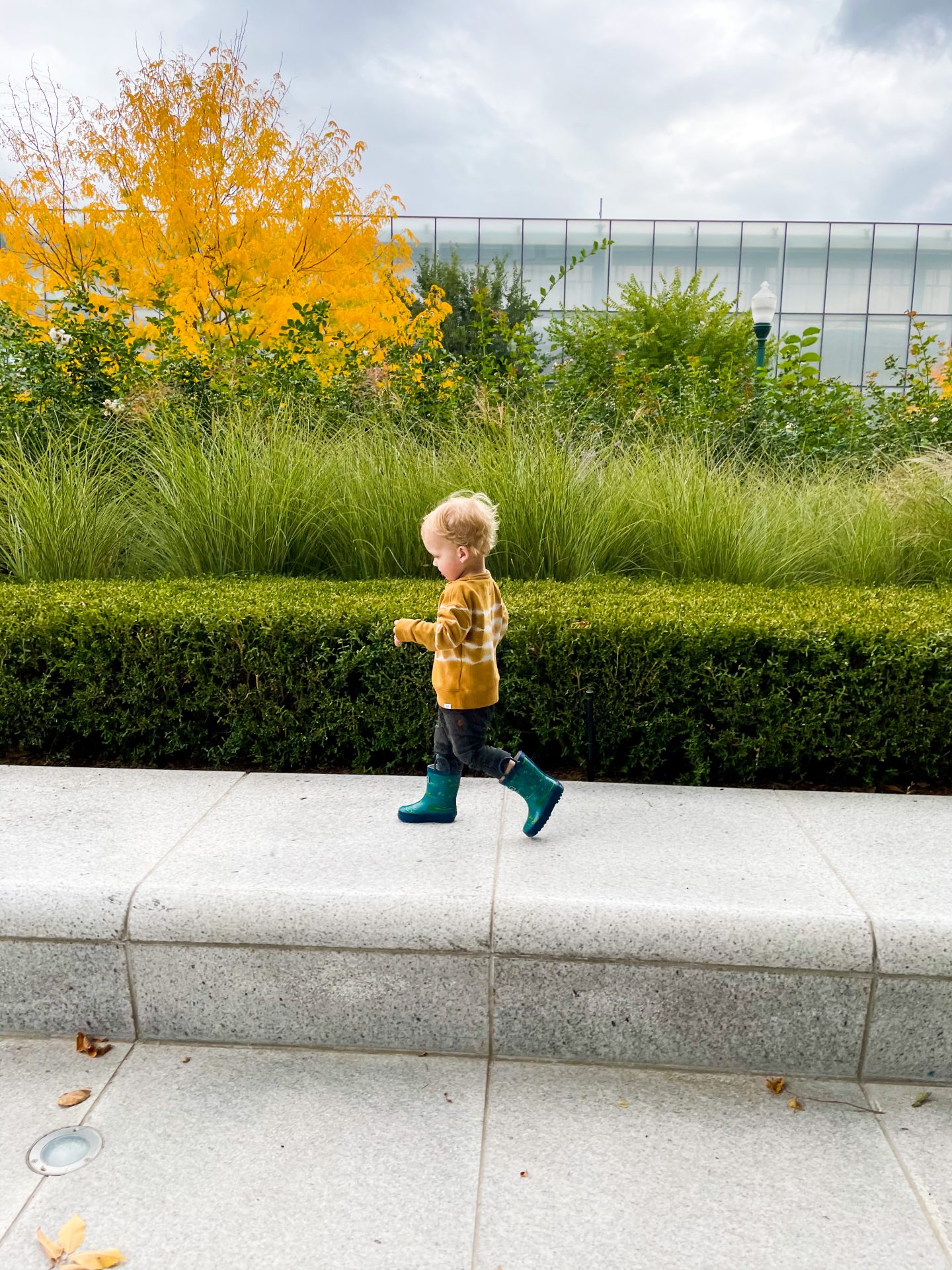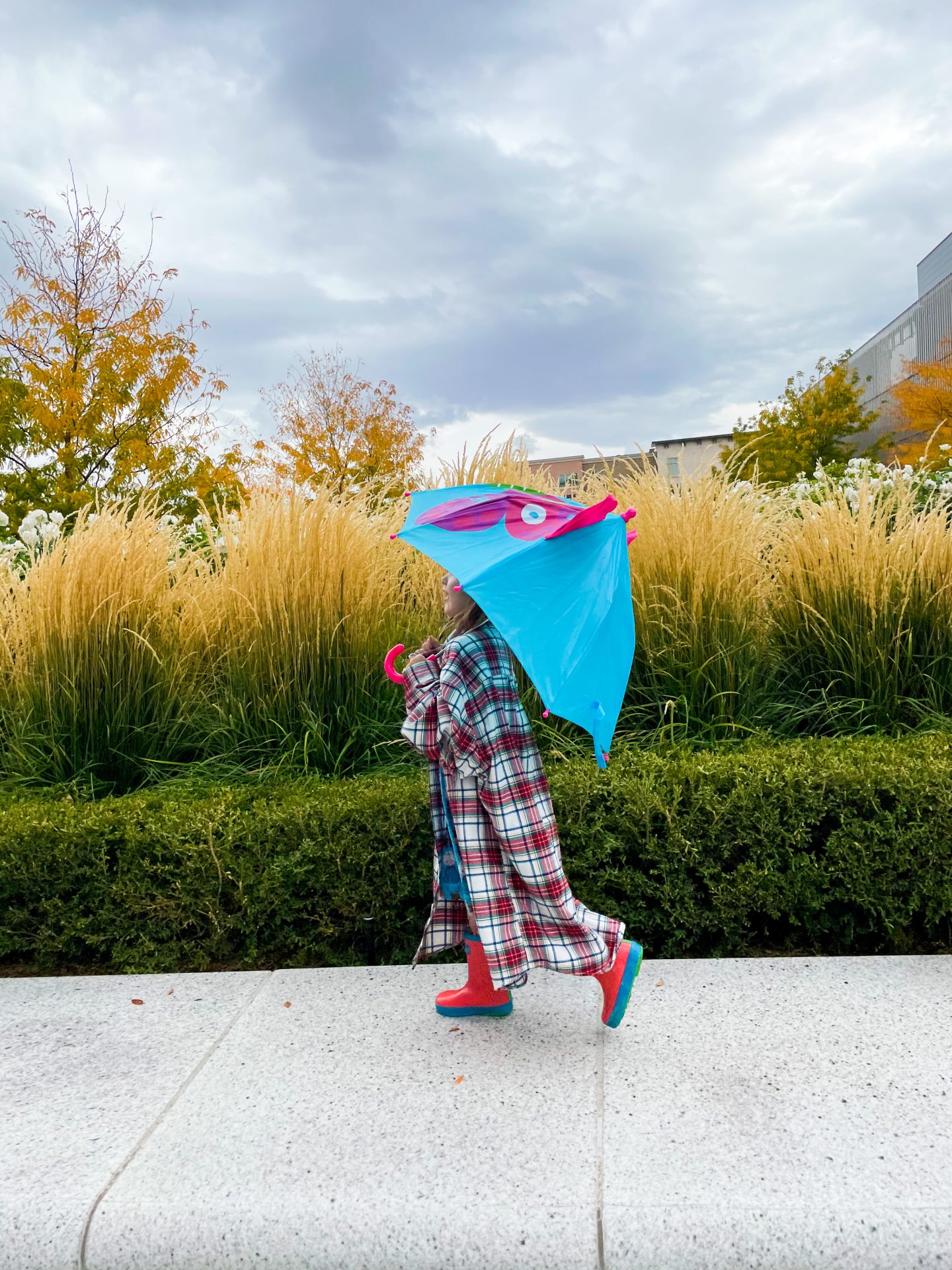
The animated film, My Neighbor Totoro is a charming slice-of-life family film with fantastical Shinto-rooted threads woven throughout. It was released in 1988, much like another of my favourite works of art, my lovely husband, Todd.
To anyone unfamiliar with the film (which seem a bit hard to imagine, as it feels like I was one of the last people to see it), it’s about a father, Tatsuo Kusakabe, and his two daughters, Satsuki and Mei, who move to the countryside in hopes of living in a place where their wife and mother can recover from tuberculosis, once she’s finally discharged from the hospital. Moving into an old house in a very rural area, the children make new friends, and discover the spirits of the forest. Though initially a box office flop, it has become a beloved film with a worldwide cult following.
I’ll admit, when I watched the movie for the first time, I was around 20, and I wasn’t impressed. Though I couldn’t find much to criticize (except for the unsettling cat bus), it felt like a story where not much happened. Years later, when we started allowing our oldest, Gwendolyn, to start watching things, Todd really wanted to foster a love of Ghibli films in her. I wasn’t opposed, but I wasn’t convinced she’d get into it.
Gladly, I was proven wrong, and, in slowing down, and watching the movie with a 3, 4, 5, then 6-year old (and a 1, then 2 year old), discovered that Totoro actually supports and embodies many of the things I value the most in life and relationships.

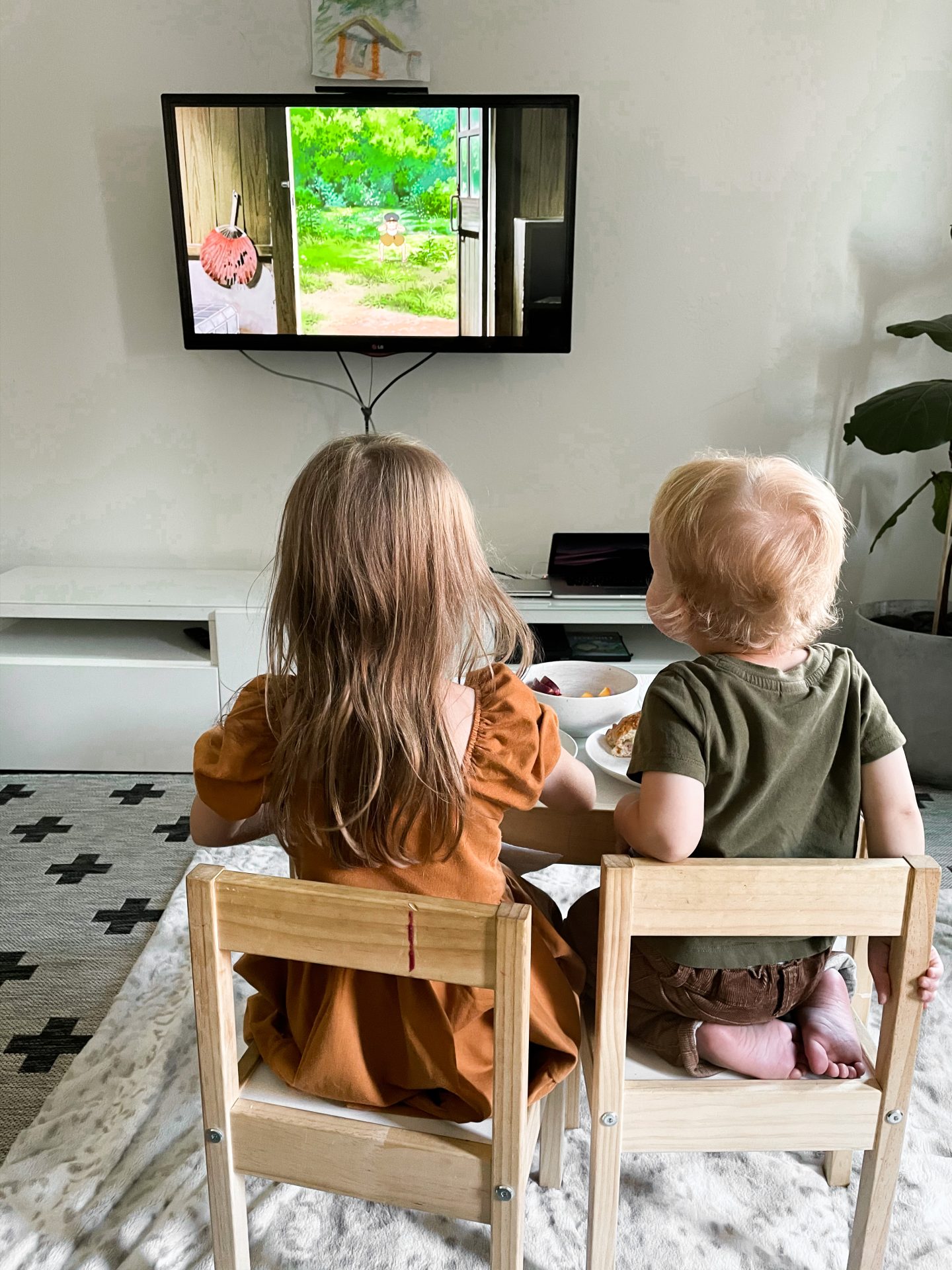

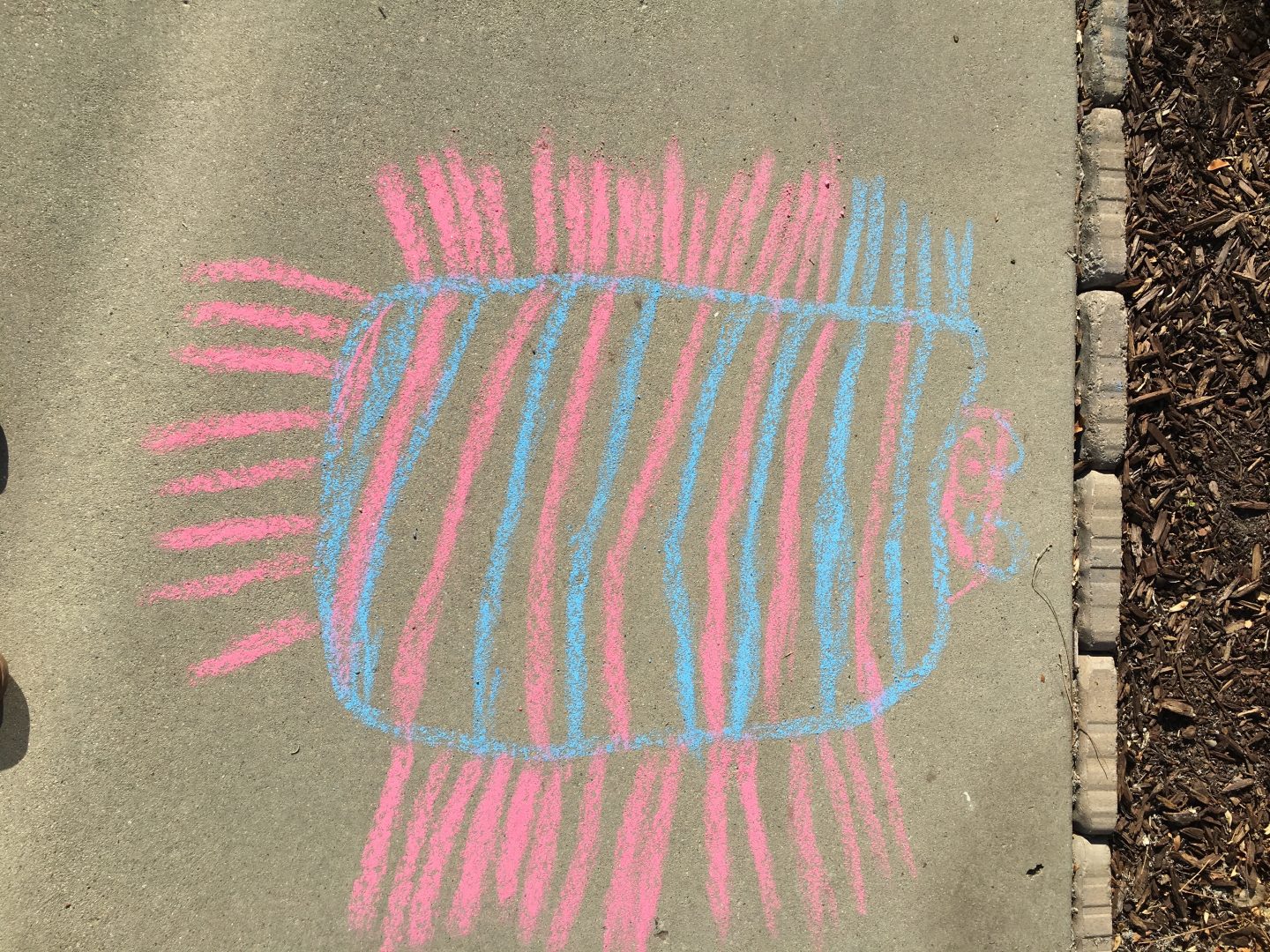
Over the years, the influence of Shintoism has had a big impact on my life. I first read The Life-Changing Magic of Tidying Up when I was very newly pregnant with my first, and it put into words, and into methodology, a feeling I’d had for many, many years, at that point. And that is that too much stuff is too much. The message fit so neatly into my beliefs, even strengthening them, and I often ‘joke’ that I am religiously KonMari. But the author, Marie Kondo—a prior Shinto shrine maiden—talks a lot about how we should treat our things respectfully, as they serve us daily. Though I don’t get hard-core into thanking my wallet for everything it does for me, I do think there’s truth in treating the things you have well, and keeping them in good order, as your things, and interfacing with them, are a huge part of your experience in life.
Throughout My Neighbor Totoro, little pieces of those beliefs are tucked in. When the Kusakabe family first moves in, the current residents of the house are soot sprites, friendly little spirits. They decide the family is nice, so they move out; but you could also view this as the Kusakabe’s respect for the home, and immediate acceptance of it, as the house itself accepting them as residents. Obviously, the girls’ later interactions with the totoros can be attributed to their youthfulness (Granny says she used to be able to see the soot sprites when she was a child, too), and to their respect for nature. However, it is worth noting that there is usually some sort of obvious interaction with the local shrines that happens before they meet with Totoro. Their home is the lot directly next to the huge Camphor tree where there’s a shrine, and a rope with ritualistic charms wrapped around the tree. When caught in the rain, the girls politely ask to share a roof with one of the small shrines. And, before the famous bus stop scene, Mei does some light exploring, and discovers a shine nearby.
It seems the family really is a good fit for their new home, in nature by the shrines, as the father, Tatsuo, tells the girls he chose that house for them specifically because of the huge Camphor tree (where Totoro lives). He obviously believes in respecting nature, and knew his wife would love living in such a beautiful place, as she recovers.
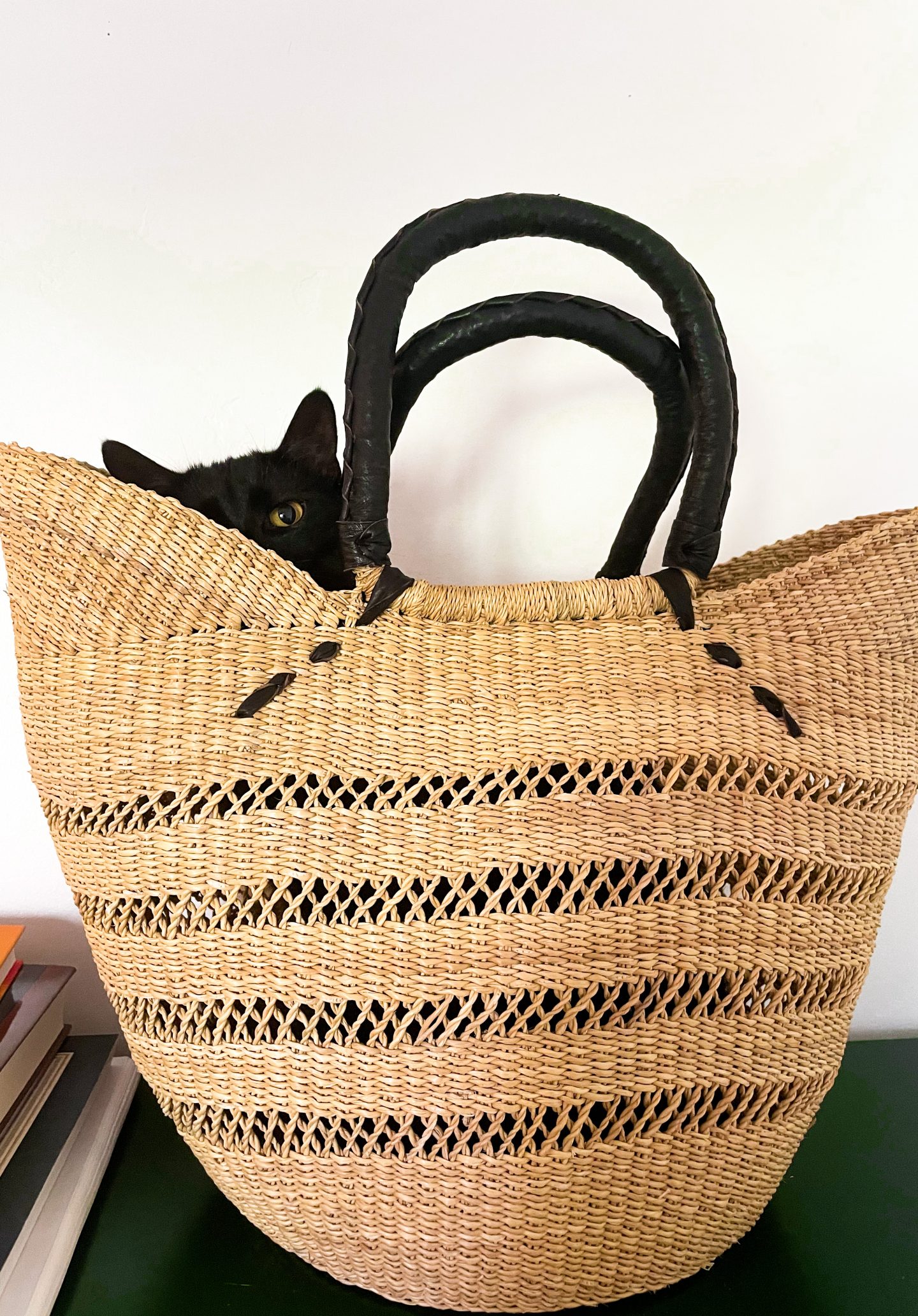
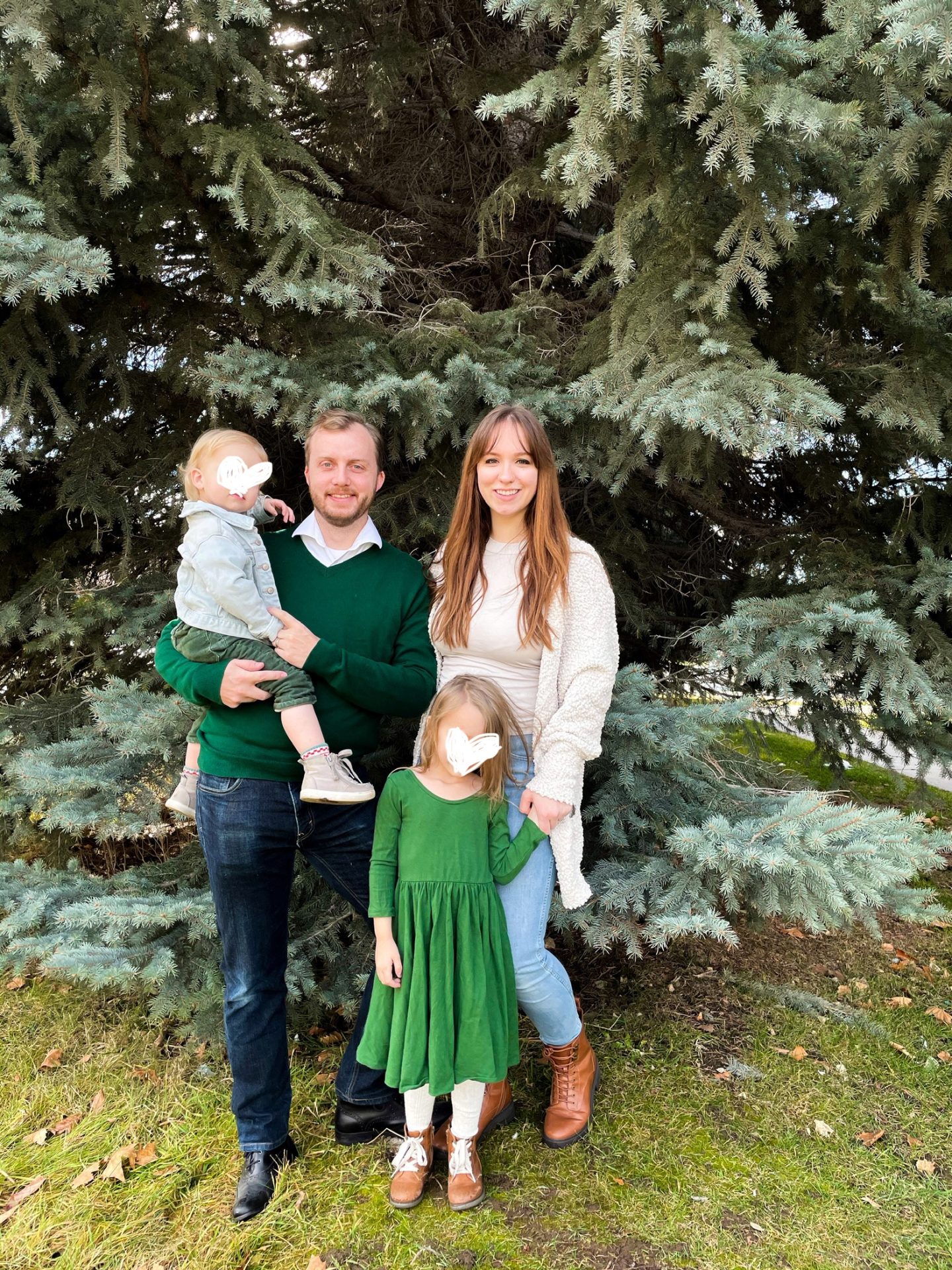
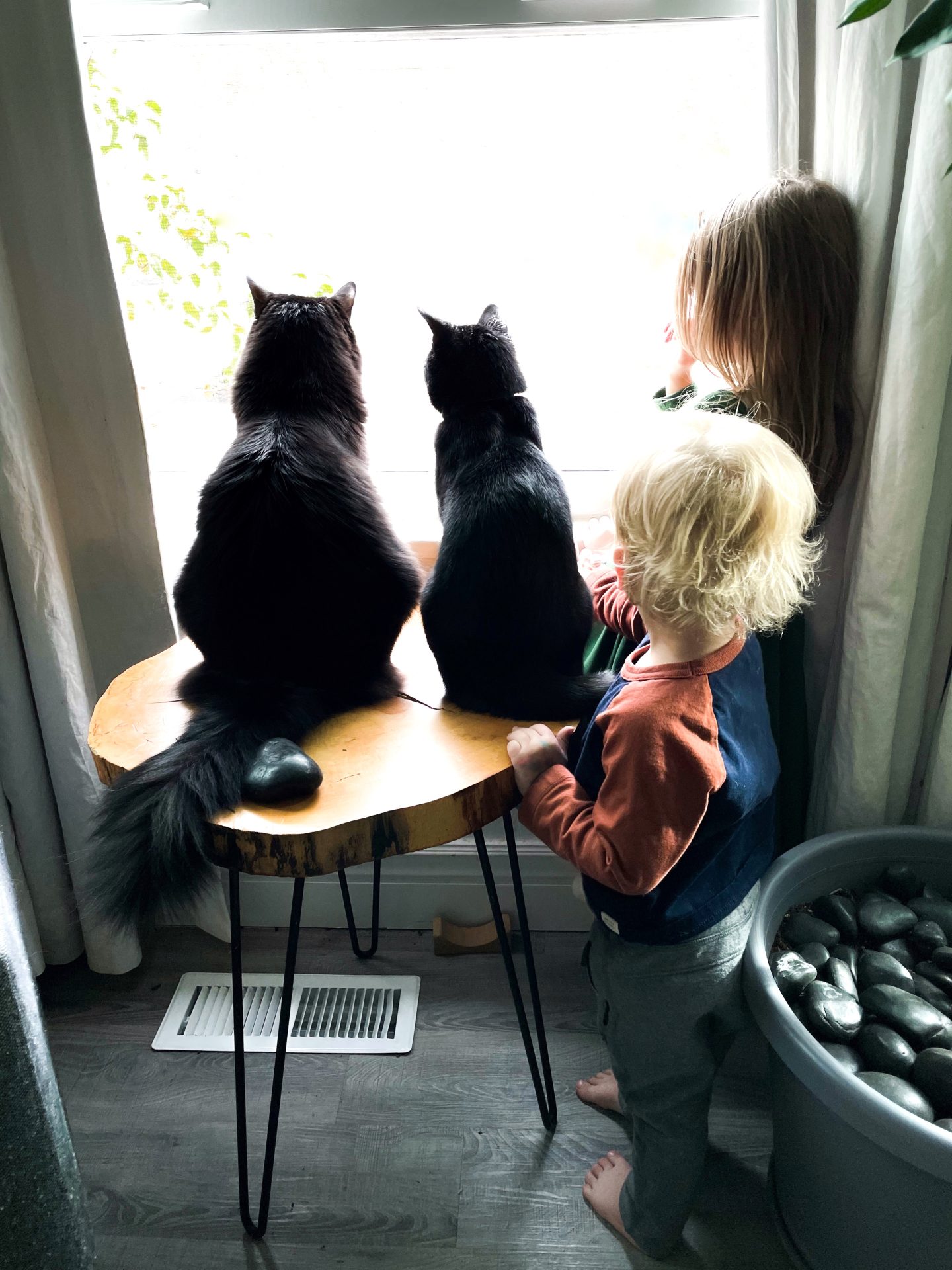
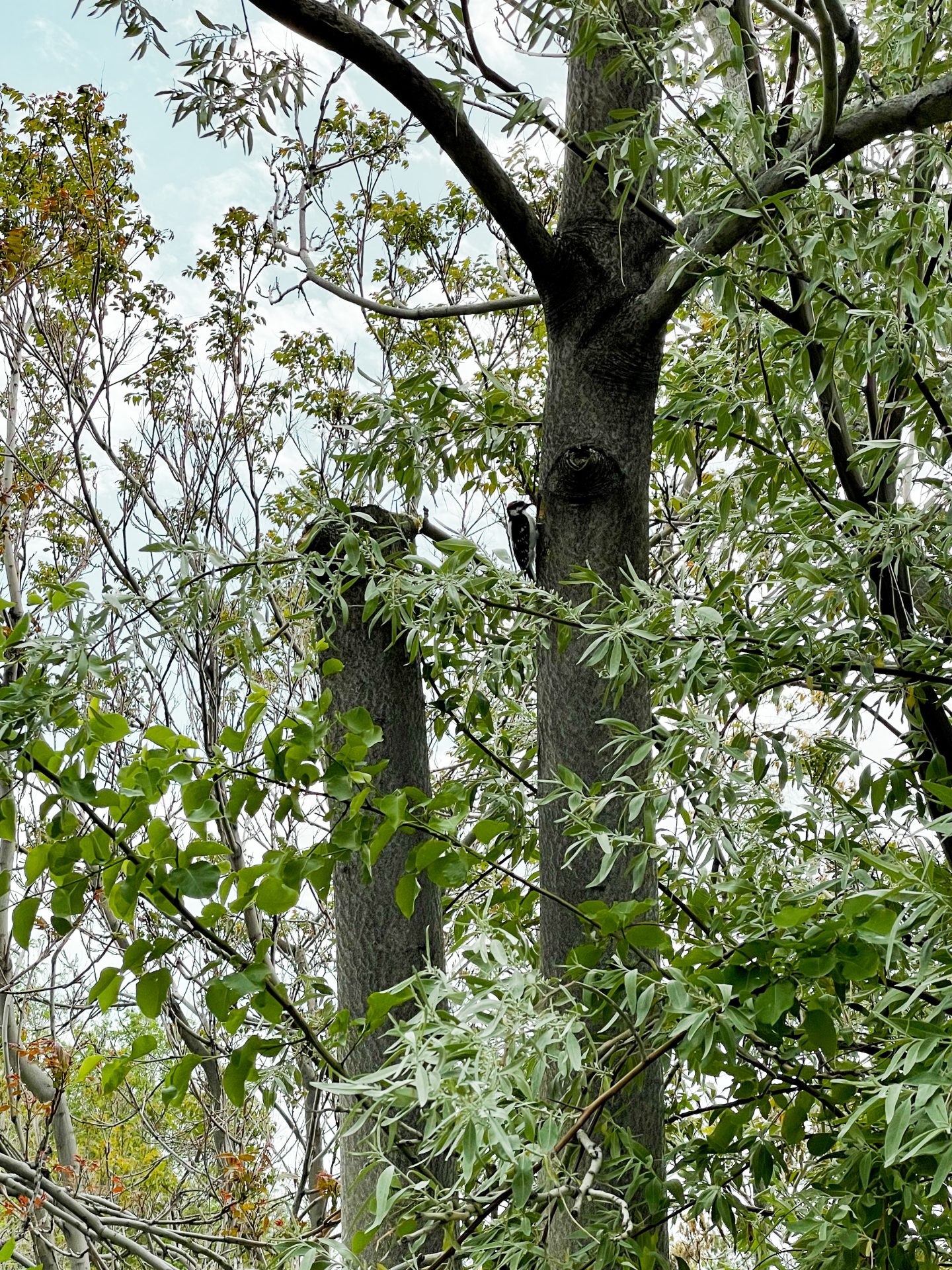
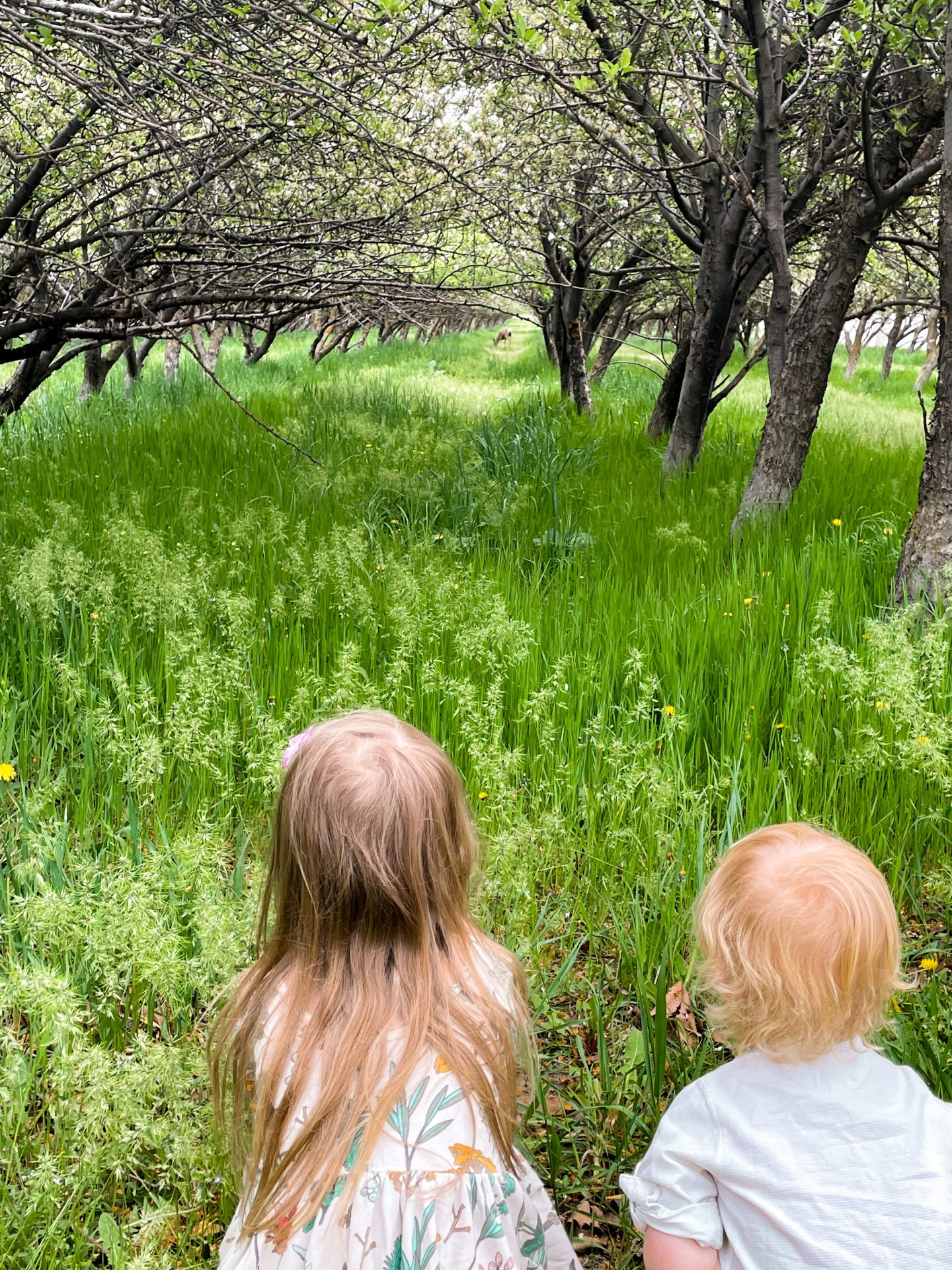

I really love how Tatsuo approaches this with his children. He believes Mei when she says she’s had interactions with Totoro, even giving her vocabulary for her experience (“she must have met one of the spirits of the forest”). But then, he takes both girls to the old shrine at the camphor tree where they pay their respects to it. You know that this isn’t the first time he’s shown them how to show their respect, as Satsuki is so respectful other times. However, their religious beliefs don’t require constant attention, even though viewers can tell it informs their behavior and beliefs.
In the movie, the girls spend a magical night helping Totoro with his ritual, as he grows the acorn seeds Mei planted into one enormous tree. In the morning, both girls recall the experience, before looking outside, but then notice that all the seeds did indeed grow during the night (even if it wasn’t to fuse together into one super-tree). It’s unlikely that this was merely a shared dream, so I like think of this scene as ‘realistic religion’. They did a ritual, and had a very positive experience. In the end, the grandiose outcome didn’t happen, but something real did happen, and you could attribute it to the performed ritual.
As someone in a high-demand religion, living in a state know specially for it’s religion, seeing how Tatsuo Kusakabe sets and example for, and teaches his children about his valued beliefs in a seamlessly natural and casual way makes me want to bring that same sort of comfortability and low-stress to my attempts to pass on of beliefs to my own children.
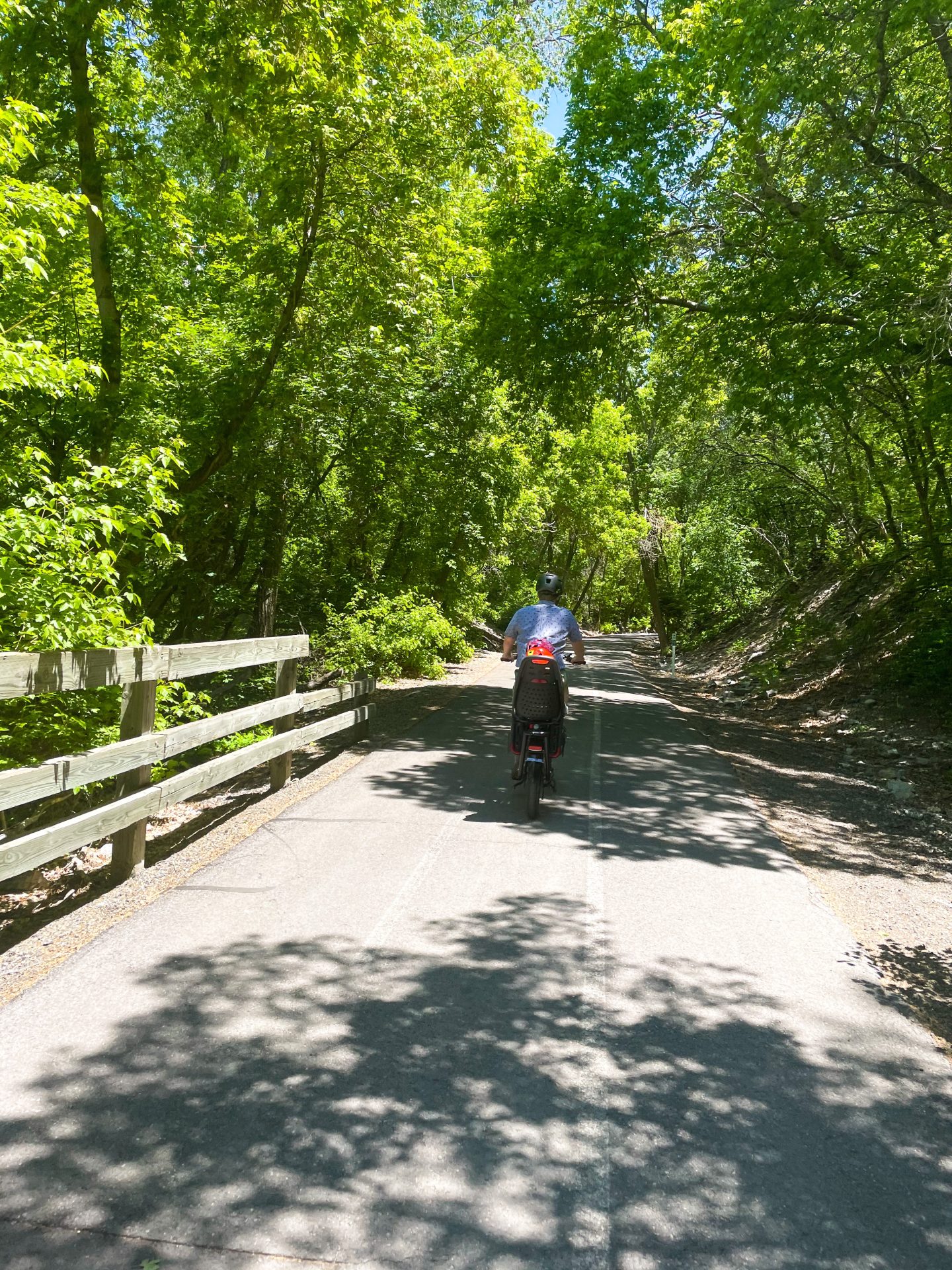
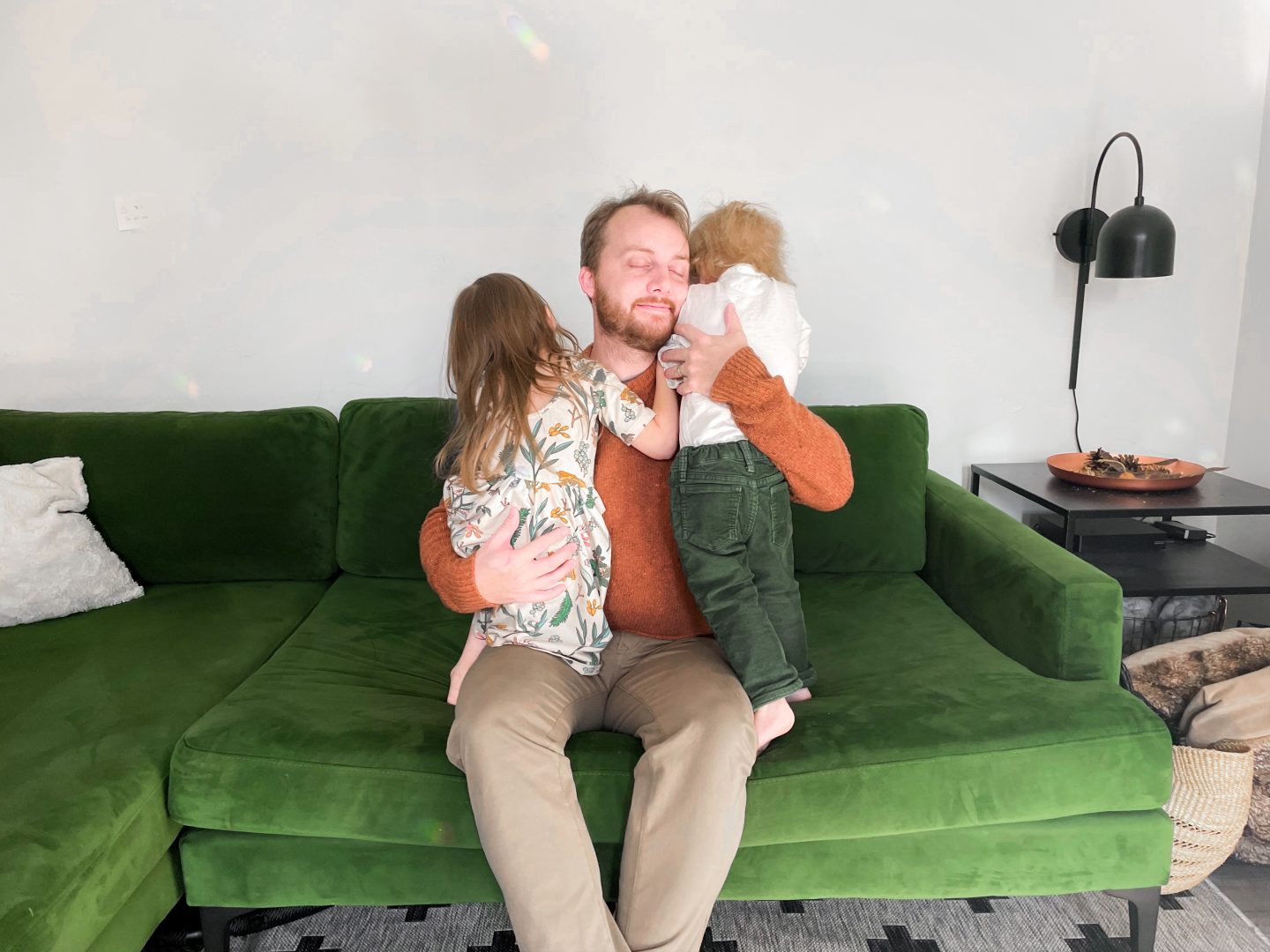
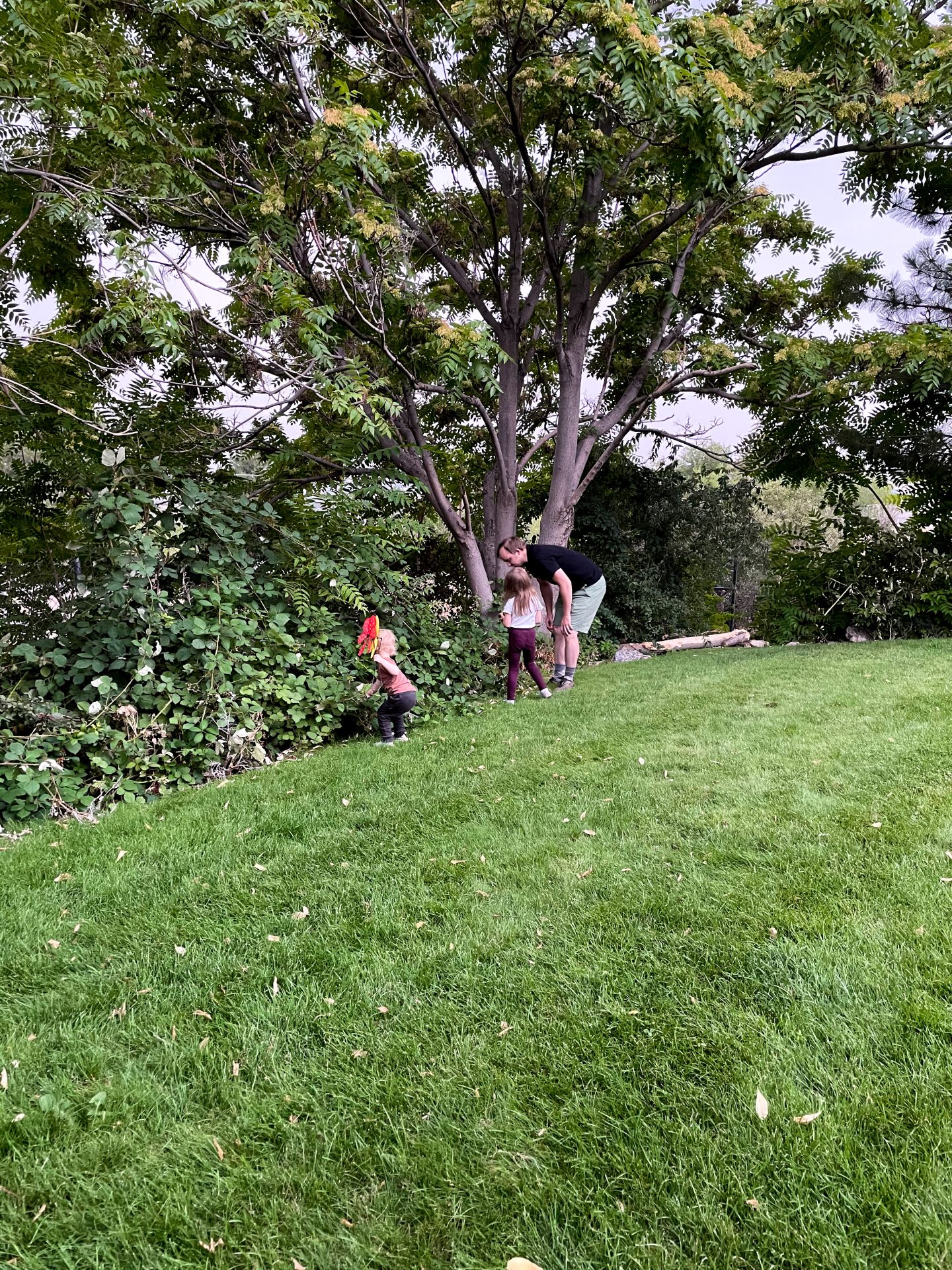
But that’s not the only thing the dad does well. As an attachment parent, I really appreciate seeing a model for good parenting on the screen, as it is not easy to come by, especially in a film that old. I don’t know about others who practice, or attempt to practice, attachment and gentle parenting, but it can get really rough some days, and I cannot overstate how helpful it is for me to just see another adult modeling it, even if he is a cartoon. Tatsuo Kusakabe is an icon of good parenting.
His wife is in the hospital—we don’t know the details, I only know she has tuberculosis from Google—maybe it was almost fatal, maybe it’s just been long and drawn out. Everyone in the family is probably feeling complicated and not-so-great emotions. Either way, his partner has been unwell, and he has two kids that he’s now solo parenting. And he’s moving to someplace entirely new, and out in the boonies. New house, that’s not in the best shape; new route to work, have to figure out what to do with the kids; check in with the wife. It’s a lot, to say the least. But he handles it with a grace I can only pray to get a touch of. He speaks kindly and respectfully to his kids, even when he’s having to remind them of things; he’s playful; and he listens. He might have been able to slip into a trope of a ‘perfect parent’ through a child’s eyes, but the movie lets him be just as much a real person as his children are.
During their first night in their new home, the Tatsuo and the girls are taking a bath. The wind is blowing. The girls are obviously a bit uncomfortable with they way the roof is loudly clanging, and every single window and door is rattling. But Tatsuo tells them to just laugh, because, if they laugh, the scary things won’t feel scary anymore. Satsuki buys into it, and as the two of them laugh together, Mei finally joins in. but you may notice, Tatsuo isn’t just laughing, his eyes are bulging. It’s absolutely unhinged laughter. He is keeping it together for everyone, but he is feeling scared and uncomfortable, and probably more than a bit overwhelmed with everything. And we get to see that. A real-life look into a respectful parent who also has their own feelings they have to deal with in a healthy way. I cannot commend the writers enough.
But he’s not the only interesting and complex character, though. Personally, I really love Satsuki. As a former extremely shy child, I wish I could have seen a child, like her, model polite interaction with ease. She’s also a great example of an inclusive, responsible, and helpful older sibling. In contrast, we have Kanta. He’s obviously shy, and that makes him jumpy, quiet, or aggressive, depending on the situation. However, the filmmakers kindly continue to follow him so we can see that he feels happy, or scared, or content after, so you actually understand him as a person, as opposed to just seeing him as ‘standoffish’. Plus, as the story progresses, he and Satsuki come to a sort of friendship. When we first meet Granny—Kanta’s actual grandmother—like many old characters in other Ghibli films, there’s there moment of almost-fear, or just feeling startled at the appearance of an old stranger. However, the studio always does such a great job of going on to show positive relationships between children and older people, which is one of the things I find most valuable across their works. Granny, goes above and beyond to connect with and help out the newest family hit her village, in ways that are specific and practical. No ‘let me know if you need anything’, just being there, and helping out when she can.
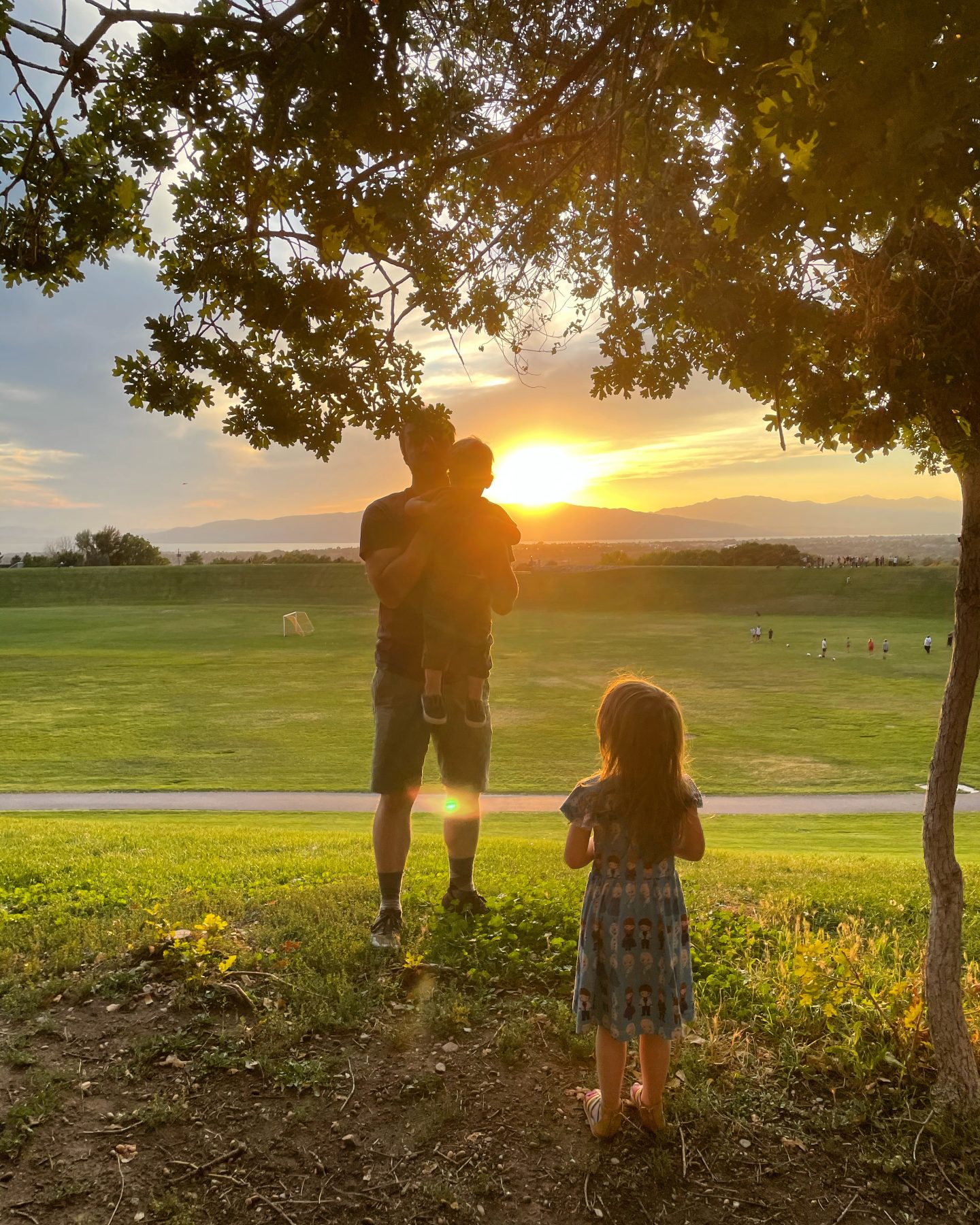
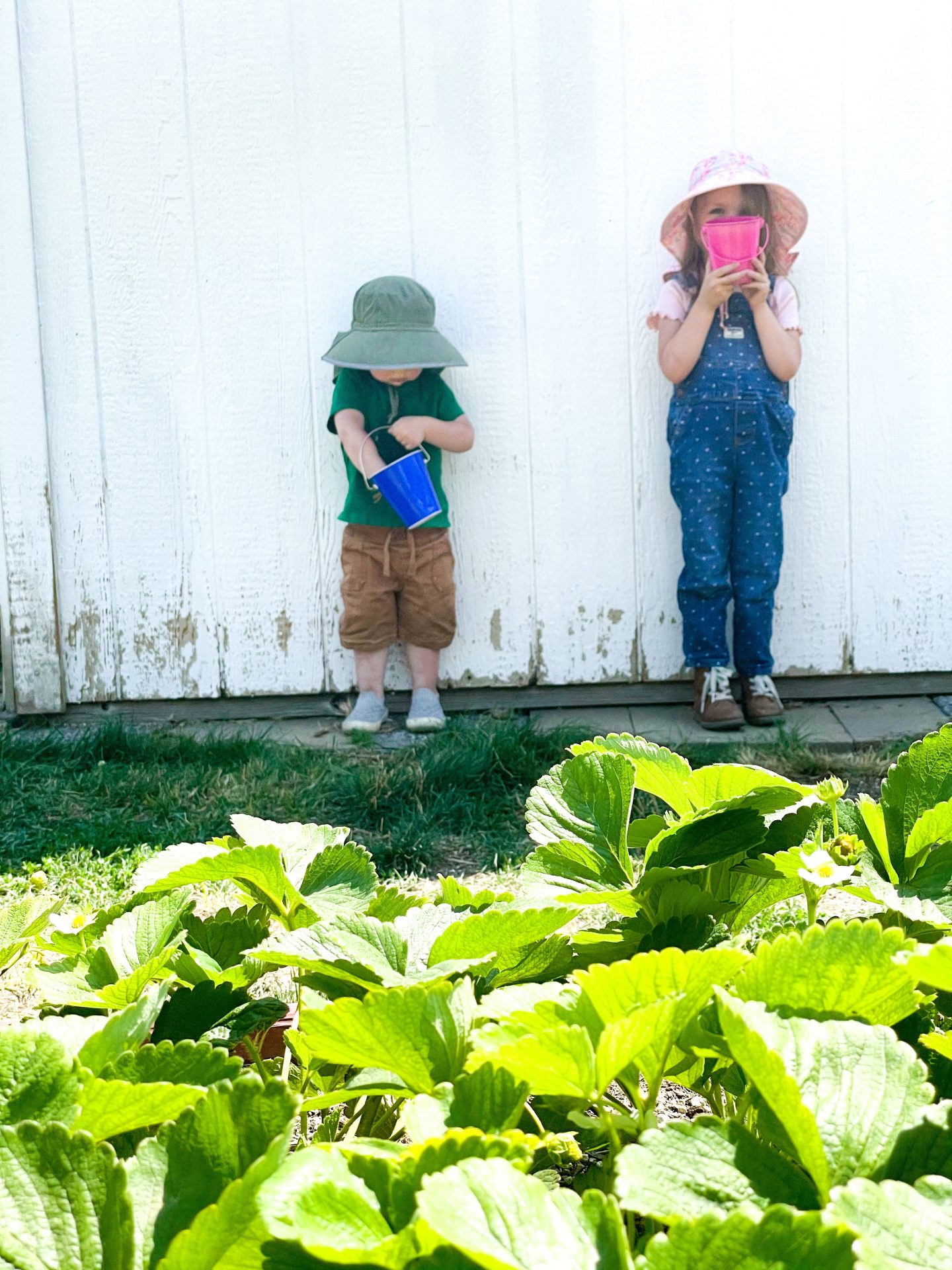

Recently, our children were telling me and Todd who each of our movie counterparts were. Gwendolyn is obviously Satsuki, and Harry is Mei—to be honest, he’s watched it from such a young age, they act incredibly similar. He even has a ‘Mei gasp’—and Todd is either ‘the dad’, Tatsuo, or Totoro. I get to be the mom. At first I used to joke that that meant I got to lie in bed without anyone else in there with me. But recently, during an emotionally rocky moment, I wondered if maybe the similarities between me and the mom in Totoro go deeper than that. I don’t have tuberculosis, but I still struggle. There are random days where feel much less capable of doing my usual things (though recently, that is definitely burnout). And then I feel sad.
In the film, the mom says she can’t wait to get better, because she’s going to spoil her girls rotten. Whenever I’m there for that part, I always feel a tiny boost of hope. Yes!—I want to be a present parent! One who, like I was with just one child, can fully be in the moment, and spend most of the day enjoying her children. But there’s always somewhere to go; or the never-ending tidying-up; or the errands; or the mental load of what’s going on or what’s coming up in our schedule; or there’s trying to do things ‘for me’, like writing 4,000 words about Totoro and everything else all together; or sometimes my body’s throwing a disagreeable cocktail of hormones at me. I’m left wondering why I can’t seem to just do it just right. And then I wonder if the kids wonder that, too, and if I, in my wrestlings, don’t feel as unstable and distant as Satsuki and Mei’s mom.
In the endless consumerist, capitalist hellscape we live in, are we even really going anywhere, or just running at top speed, then taking breaks only to continue running forward on a hamsters’ wheel to nowhere?
We know the mom gets better. During the end credits, we see her arrive in a car. We see there’s a new baby. Life goes on. But in my life, where I can’t or won’t simply pickup and move to the middle of nowhere to live a slower life, it’s so difficult to know I can make meaningful and lasting change to become more of the parent I want to be for my children. We have a million wonderful things in our lives, each of value—that’s why we’re doing them—but when I’m left deflated and wrung out at the end of each week from the Jenga tower that is our schedule, still grasping for the connection and time with just my kids, as I was the week before and the week before and the week before, I wonder how I make a shift without toppling everything. But the mom gets better. They figure things out. I will probably figure things out.
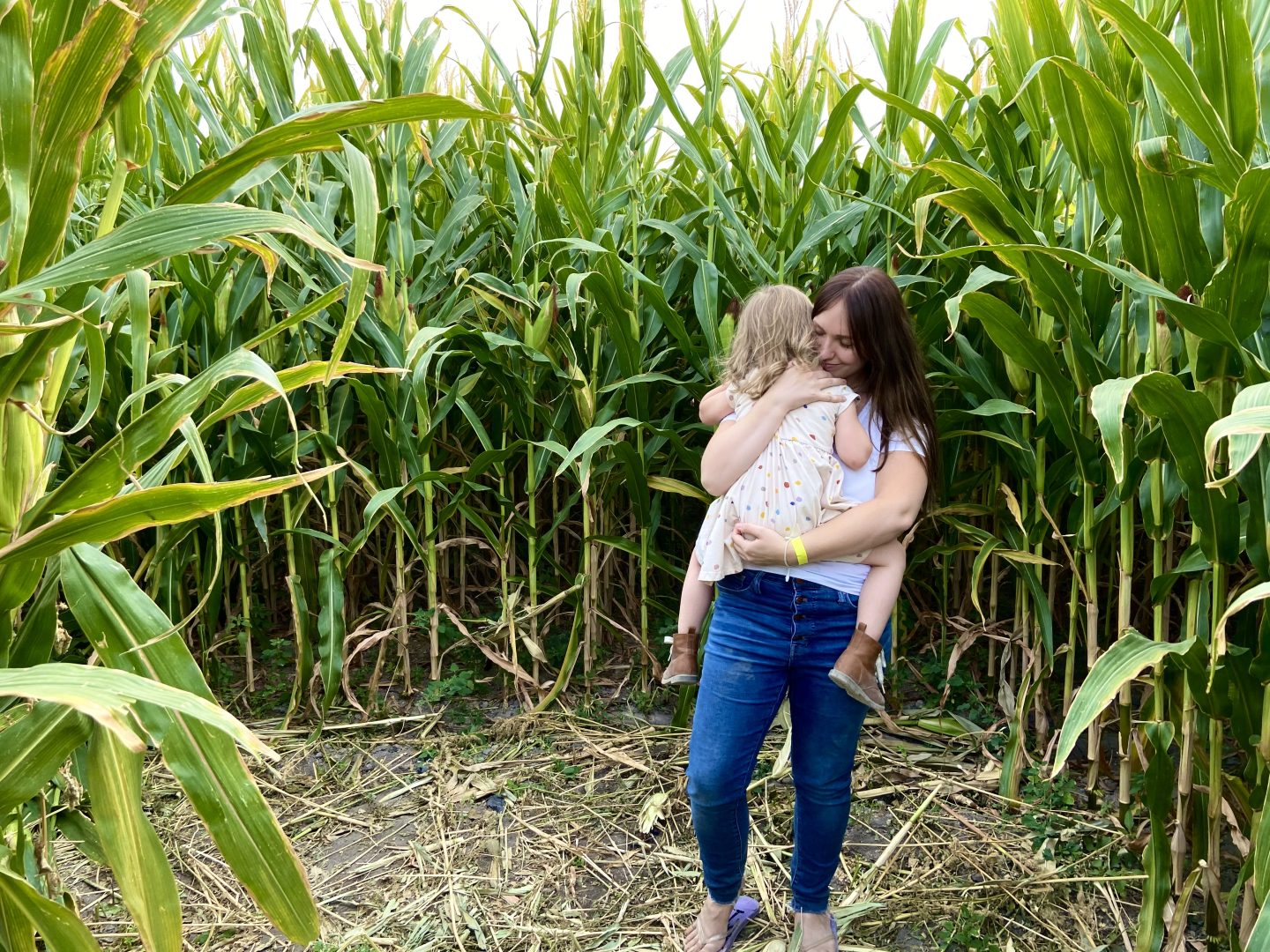
One of the things I find irresistibly charming about Totoro is the unromatical realism. When the Kusakabe’s arrive at their new house, the girls pause to admire the stream just at the front of the lot, and there’s an old broken bottle in the water. Once they see the house, it only takes a moment for them to discover that a pillar on the pergola is rotten. The place is not in great condition. It’s old, and there’s trash, and dust, and the windows and doors rattle. But it’s so, so real. The opposite of what Instagram offers, yet, though the eyes of a child, simply an exciting new situation they readily accept. Gleefully dancing around, the girls declare the house is haunted.
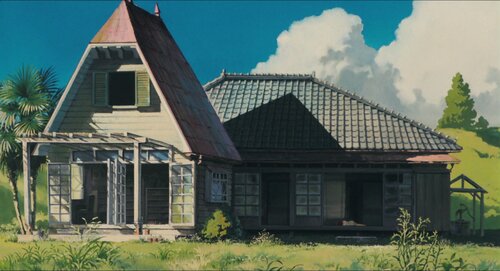
It also shows the epitome of hygge, which I am so fond of. Out of all the seasons, I think Summer hygge is the hardest to pin down. Normally, when we think of hygge, we think of getting through the wintertime, and making things cozy. It’s not too difficult to get a feeling for it in Spring or Fall either, as both seasons promote a desire for change, and spending time with others, and enjoying the outdoors. But we can see it so clearly in Totoro. The birds and the bugs, and the frogs calling out. Working, and playing in the heat, then pausing for a cold drink, or to enjoy fresh foods. Sleeping under a bug net with all the window open. Adventuring in the woods. Hygge is hygge when you’re outdoors, moving around, and then come back inside, or gather, and have that sense of togetherness. That totally contented ‘ahh’ feeling as you’ve been living in the present.
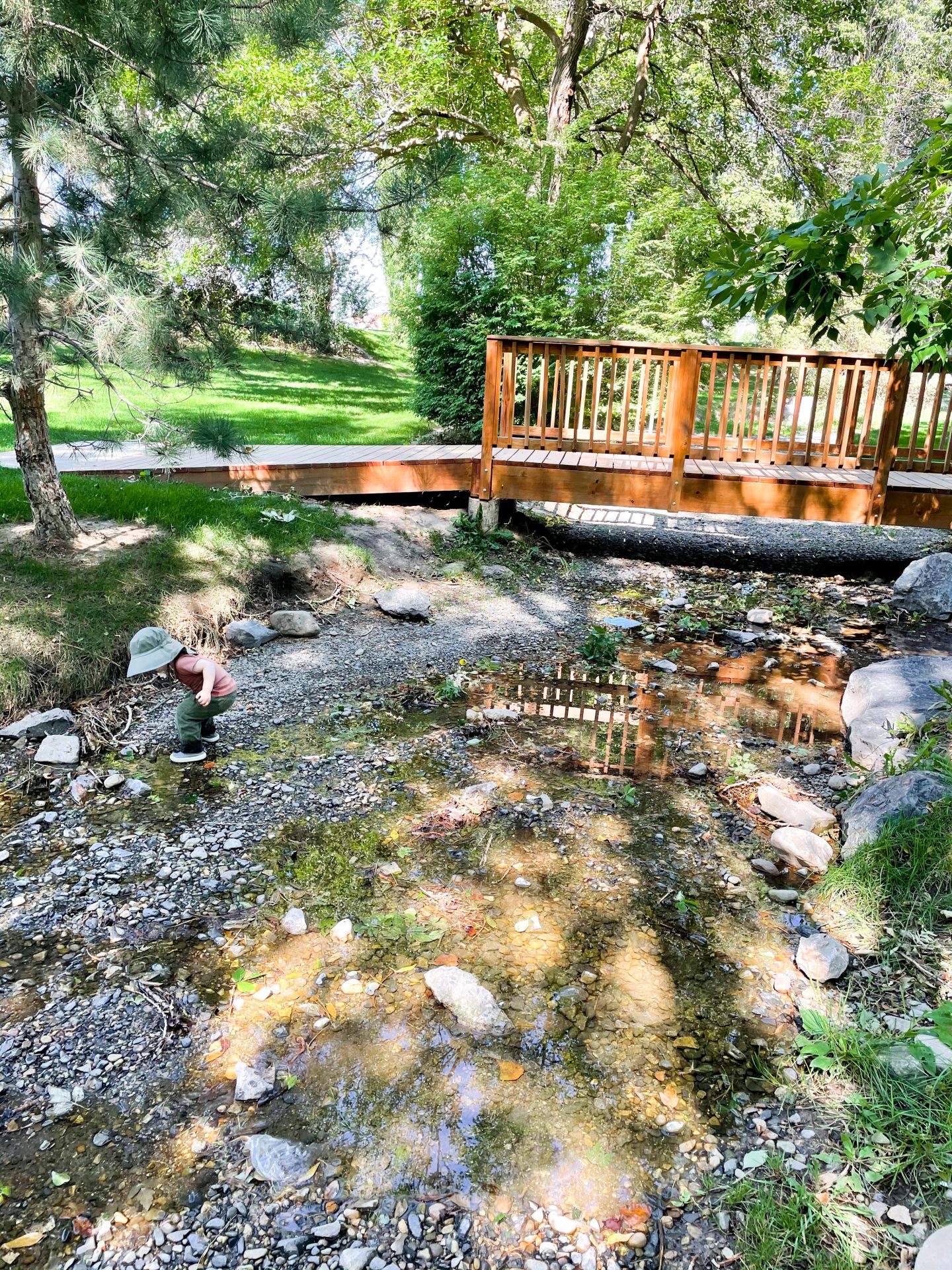
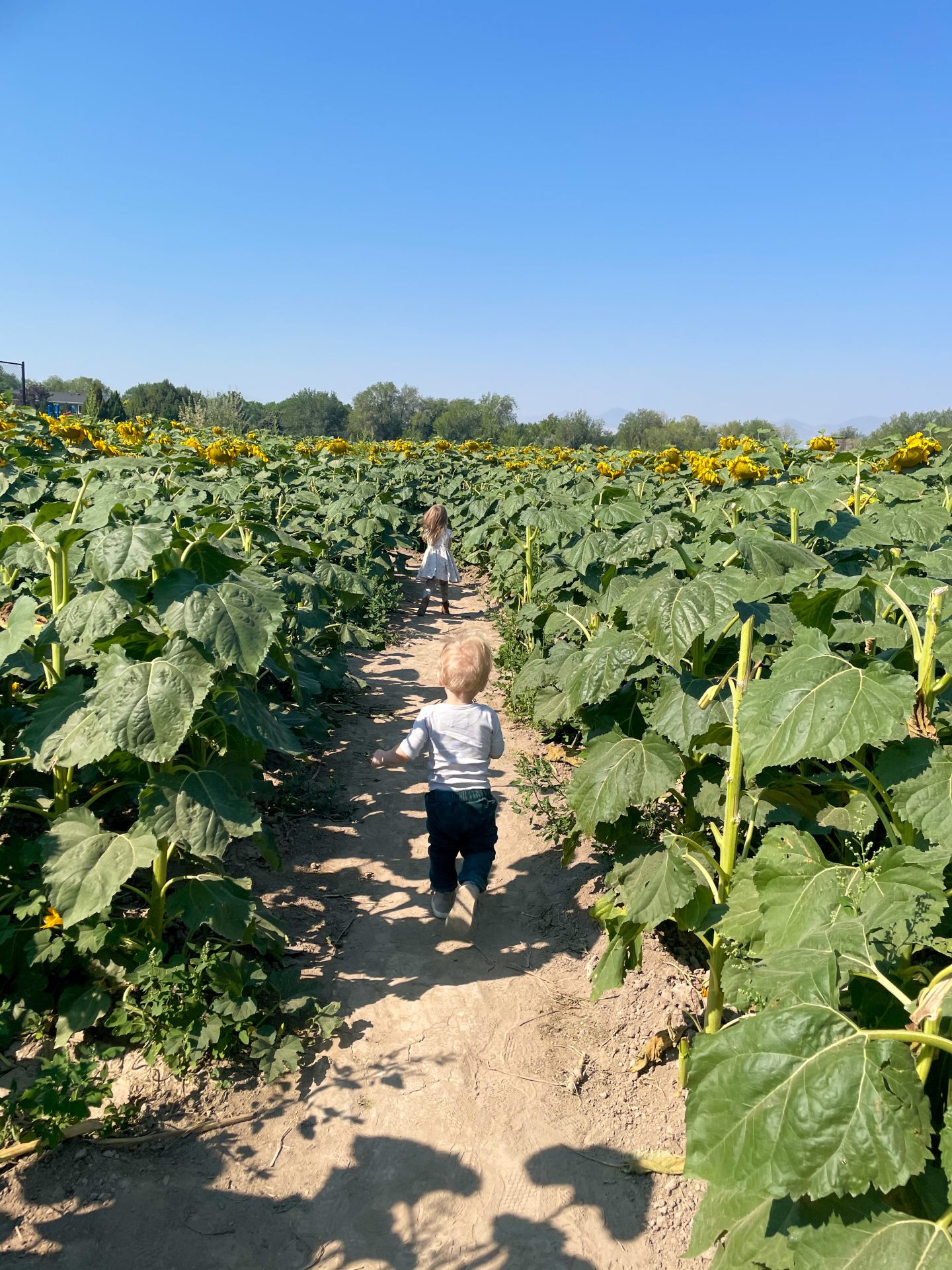

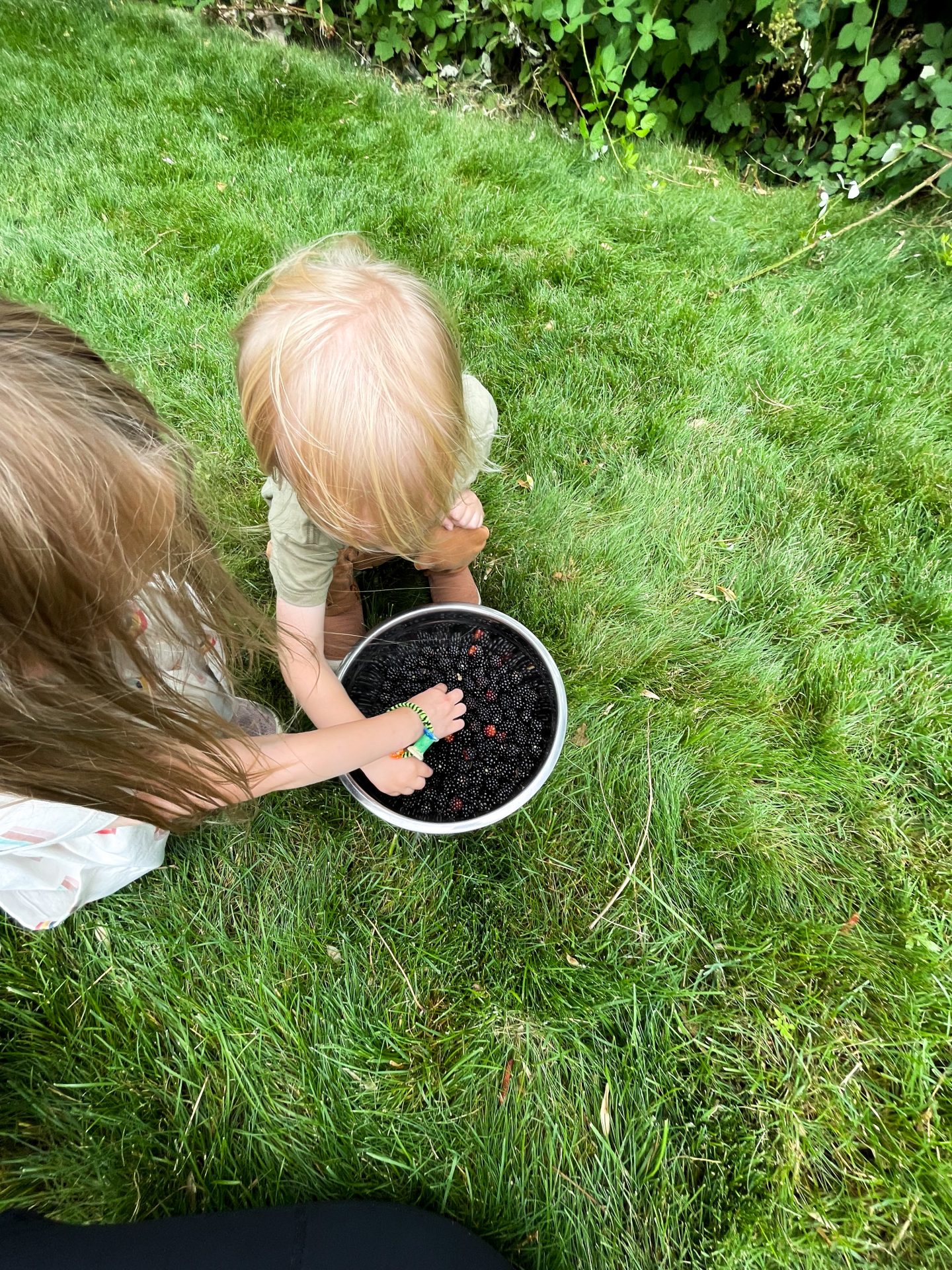

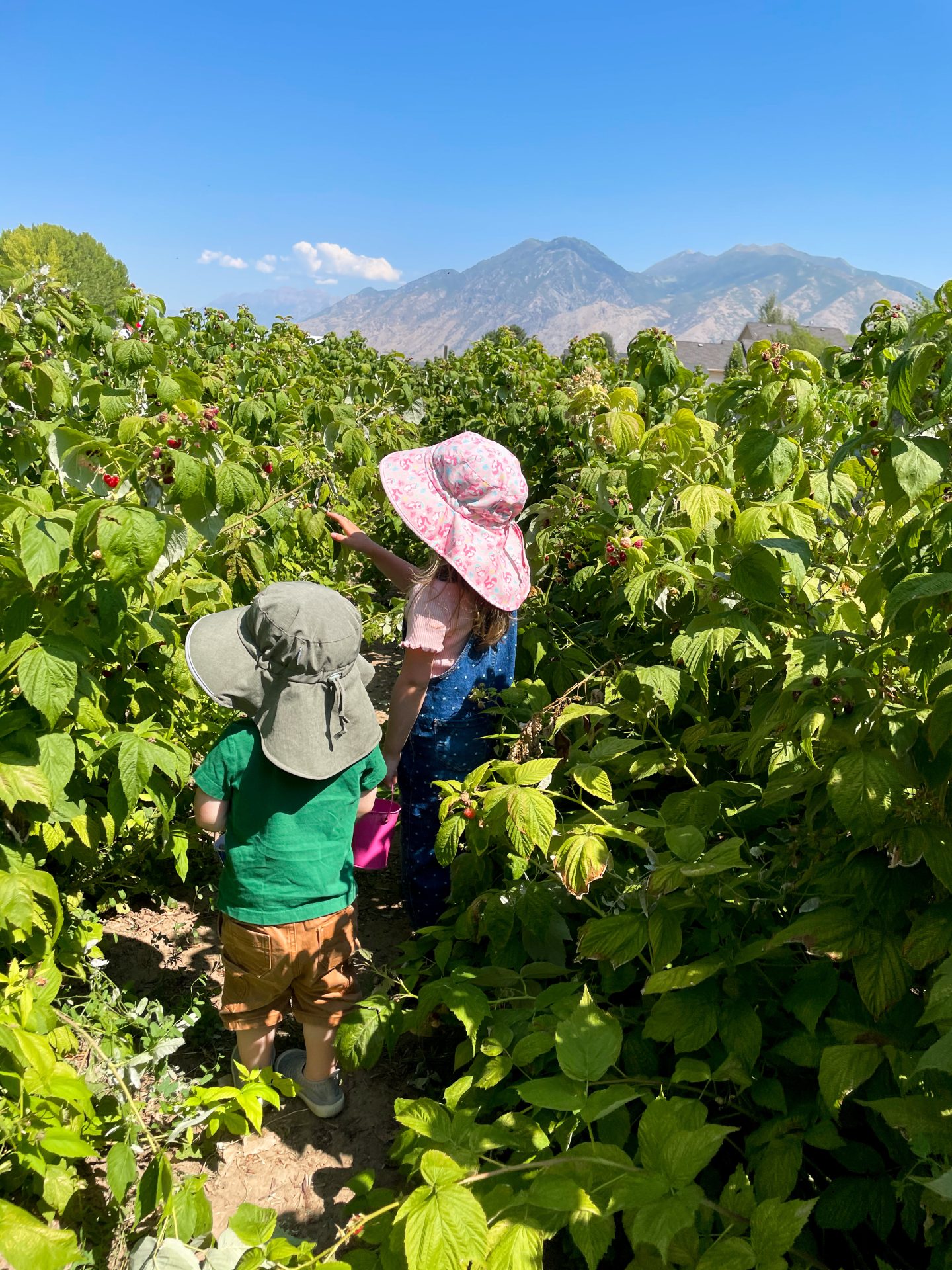
As I sit in my starter home, at the cusp of the imagined deadline we gave ourselves for being here, but with an insane housing market, and no real prospect of moving, I feel such an ache to move into a house my own kids could fantasize is haunted (in the friendly, soot sprite sense). My dream home would be a 1970s mid-century charmer with ‘good bones’ + a yard with trees for the kids to climb, and feel a cozy hiddenness in. Seeing Satsuki and Mei run around and explore fills me with some despair at the unlikelihood of attaining my dream, and also a renewed desire for it.
When my daughter, began watching Totoro regularly, I had just finished reading the outstanding book There’s No Such Thing as Bad Weather, which has single-handedly caused me the most immense agitation, from the moment I opened it, that I have ever felt from any book. I’ve long known the benefits—nigh, immense importance—of raising children with as much outdoor time as you can afford. Even though I do try to provide a decent amount of outside play and exploration, our currently situation could be greatly improved to make outdoor time easier to get more of.
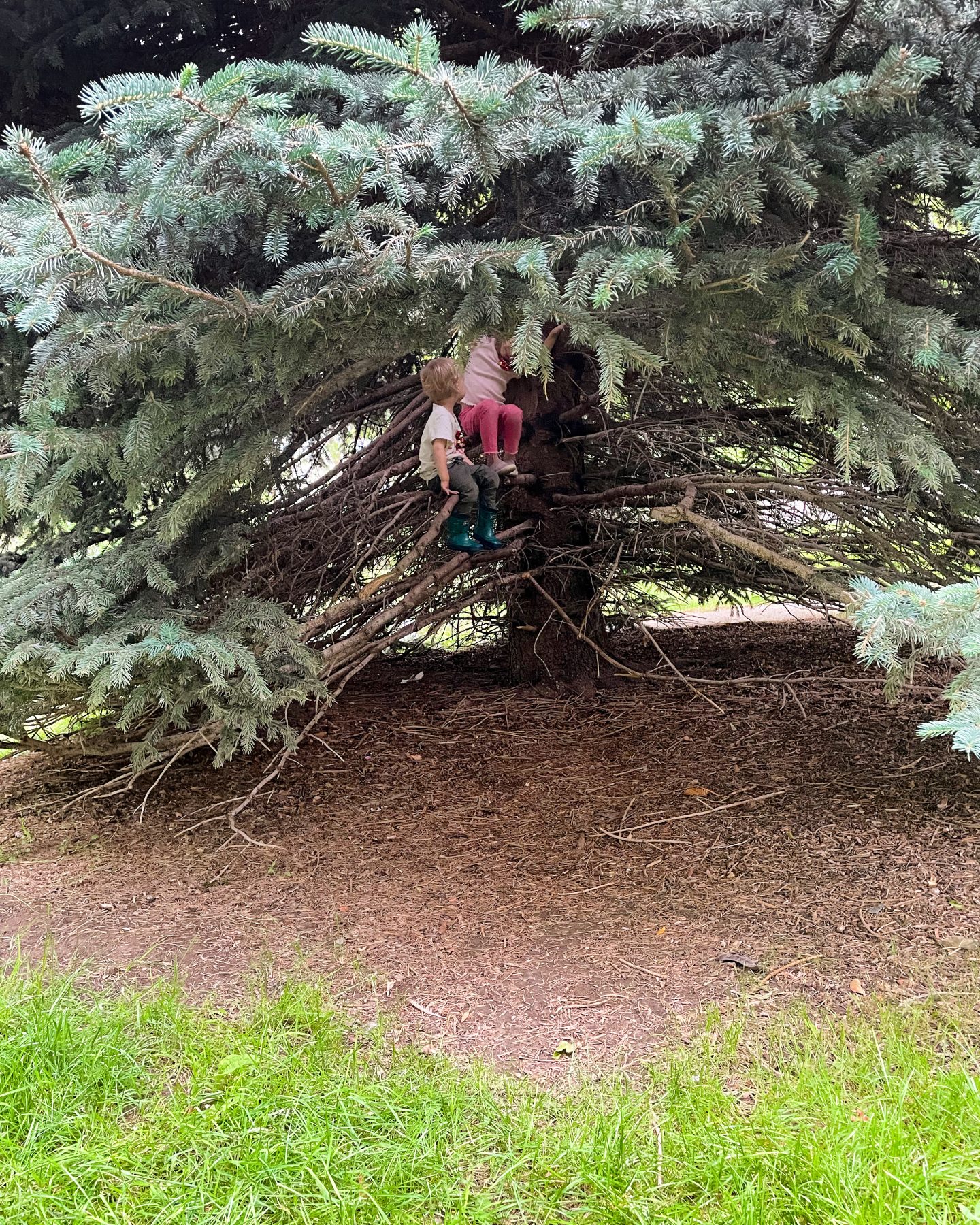
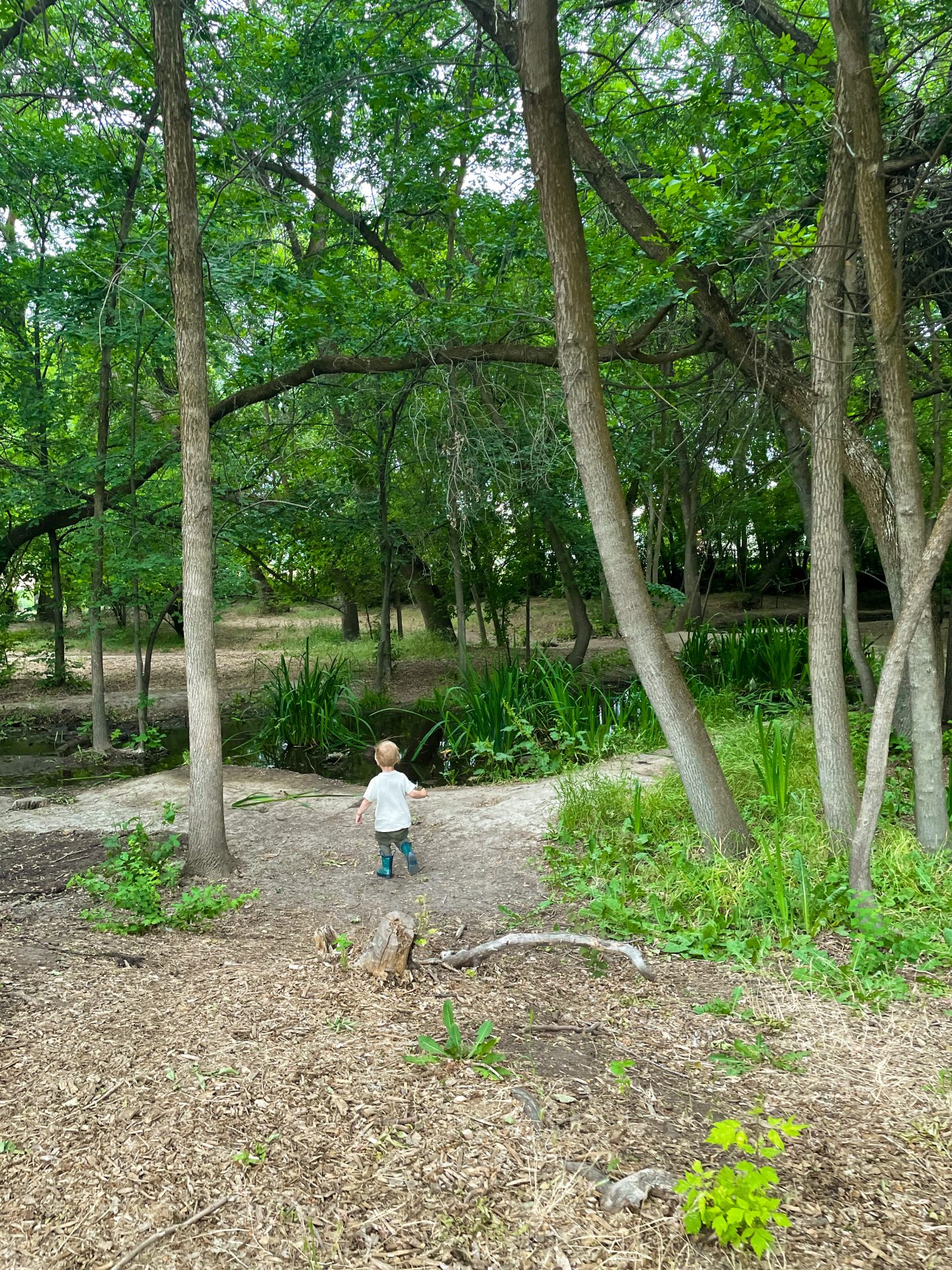
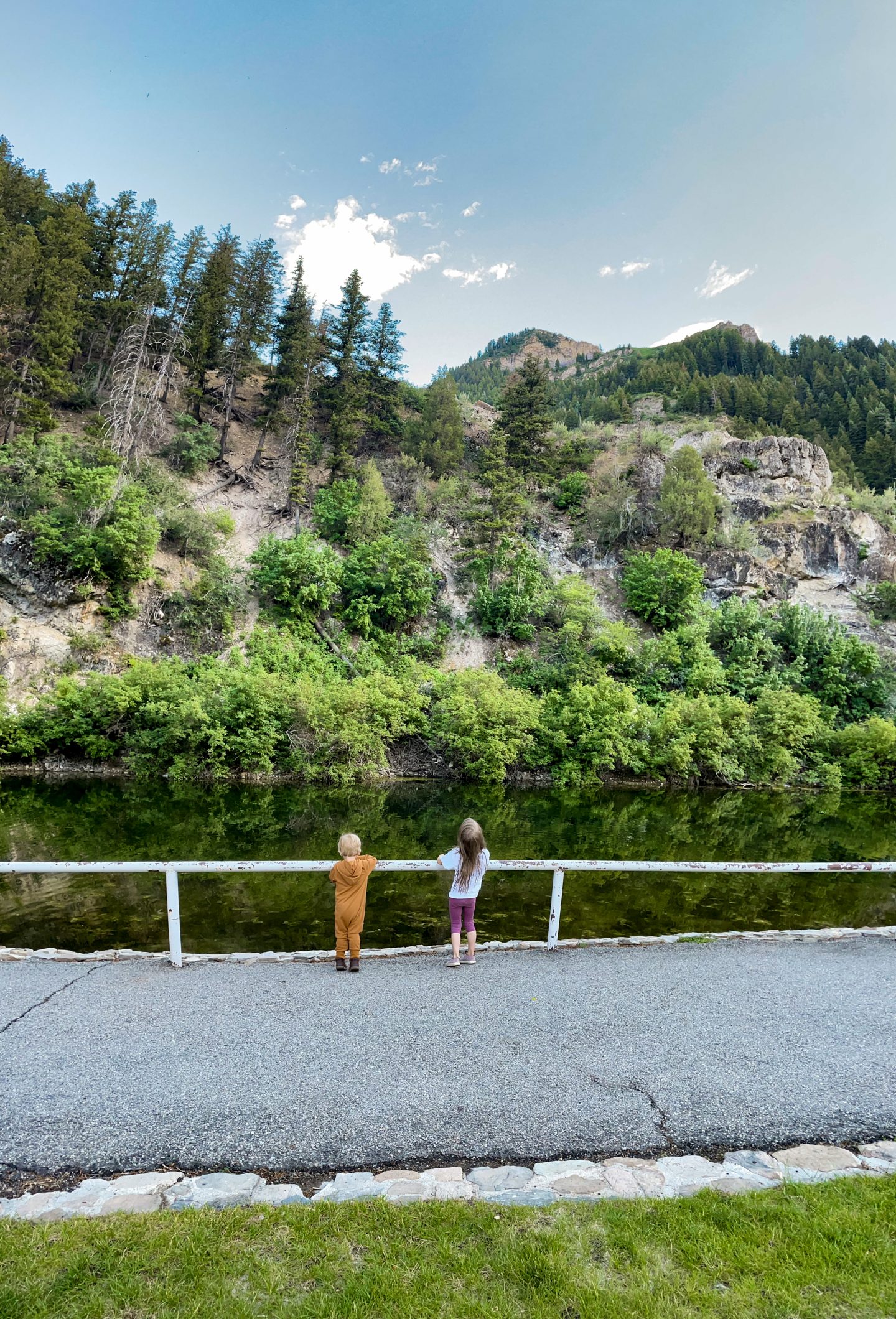
Though it’s true that my dream might be possible somewhere other than here, I simply cannot discount the benefits we enjoy from having a web of supportive community. And it took years of effort to cultivate, so I’m loathe to toss it aside, starting again, and hoping that anything we might be able to build up elsewhere would be as good as what we already have here.
In My Neighbor Totoro, though the Kusakabes are new to the village, their neighbors immediately bring them into their circle. As soon as they arrive, the Kusakabe family invites their neighbors to come visit. Granny looks after the girls when Tatsuo has to go into the city to work. The kids talk to one another, and everyone seems to try to be understanding of one another. They really are using their village to look after all the children who live there.
Recently, lots of people online have pointed out how ‘it takes a village to raise a child’ isn’t just a saying—it’s true. Parents need others to help out when they have their hands full with their own kids, and to help with the kids when they (rightfully) have other things going on. But it’s also just not available to the vast majority of Americans.
As someone with an interest in psychology, I have know for more than a decade now how important relationship with others are for ones wellbeing. Even us introverts who get worn out easily need people around us who can fill our cups up. Having a child, myself, was difficult when we didn’t have family around to help out, but we managed, us two parents (and the cat) with one baby. However, when we added a second, this lack of village network because glaringly noticeable. Thankfully, I was able to find a supportive mom’s group, and make several friends—who likely would have become really good friends with more time together—but then the pandemic hit, cutting everyone off from each other. At that same time, I read Meik Wiking’s The Little Book of Lykke, which is all about community, its irreplaceable value, and how to create more of it.
Having seen first hand how much of a life-saver a caring group is, and having struggled and failed to have that when I had my first child (leaving all of us lonely and disconnected from anyone outside our little family), I decided we needed to do more to have that support. Unfortunately, it’s not as easy as just ‘being a person living in a place’ these days. But, largely—though not exclusively—through paying, we have built up a network of people we love and trust; and who mentor, and truly care for our children. But our good situation is a result of years of struggle, and trial & error. The fact is, there is no guarantee we could recreate it somewhere else.
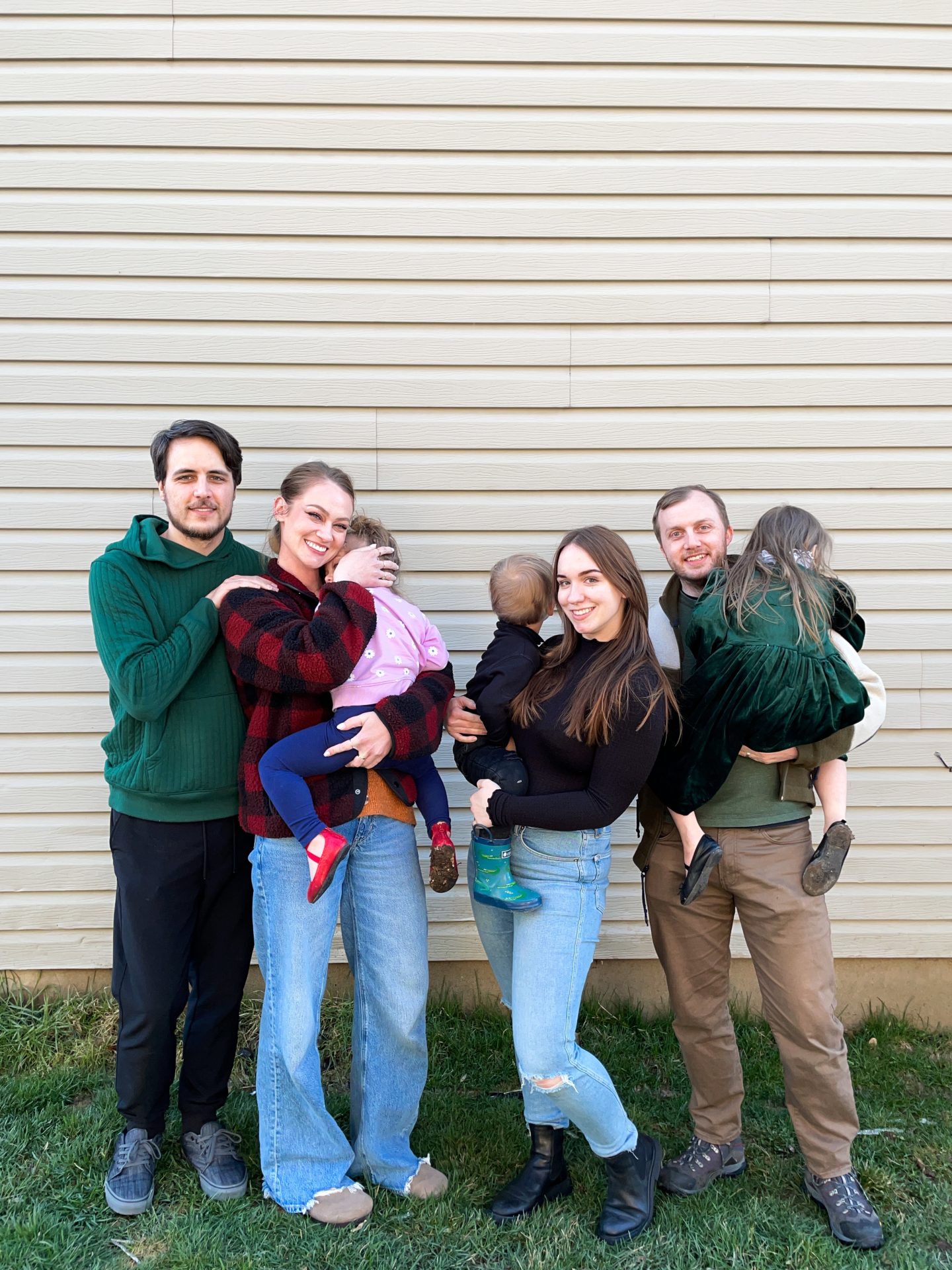
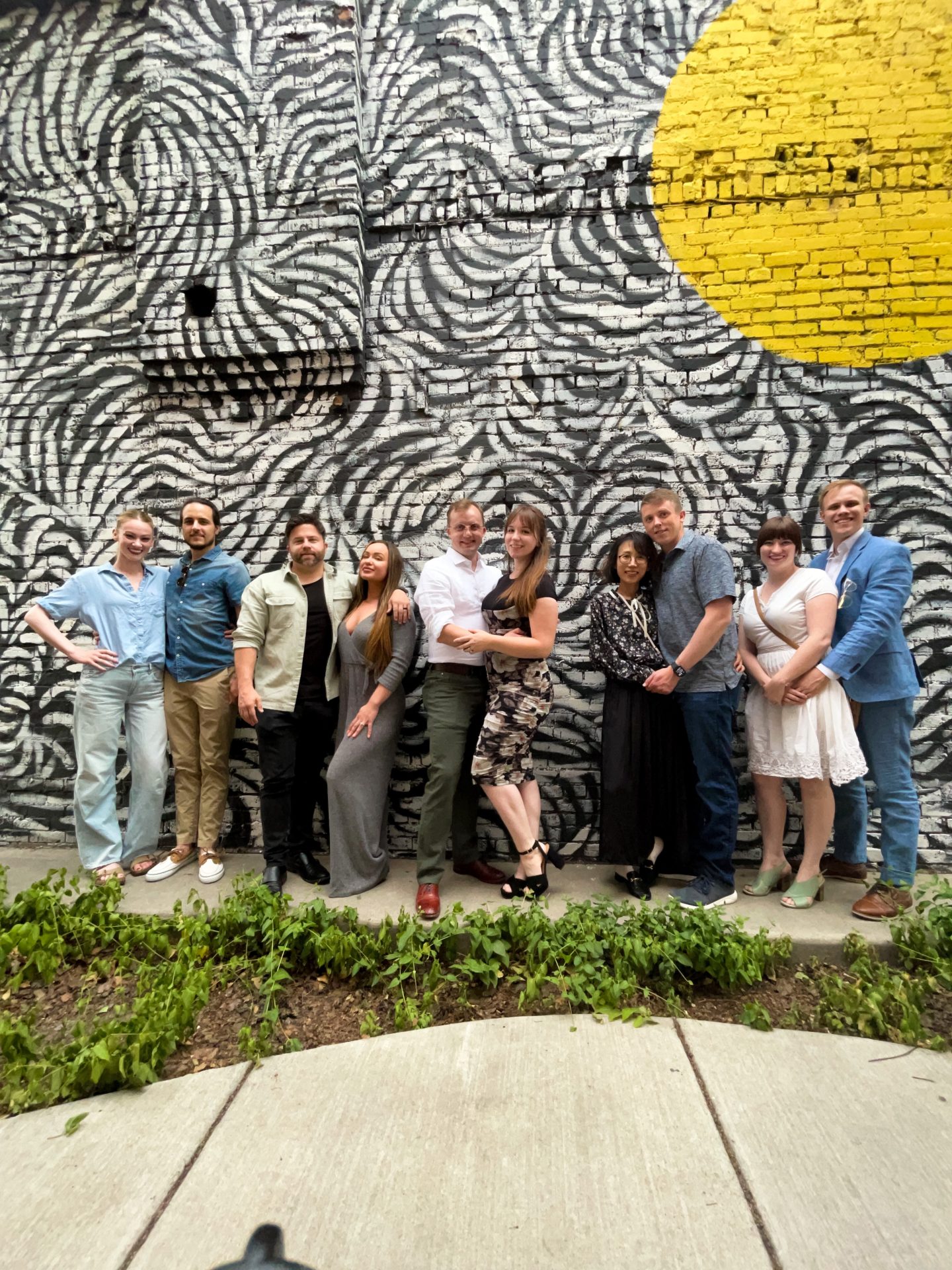
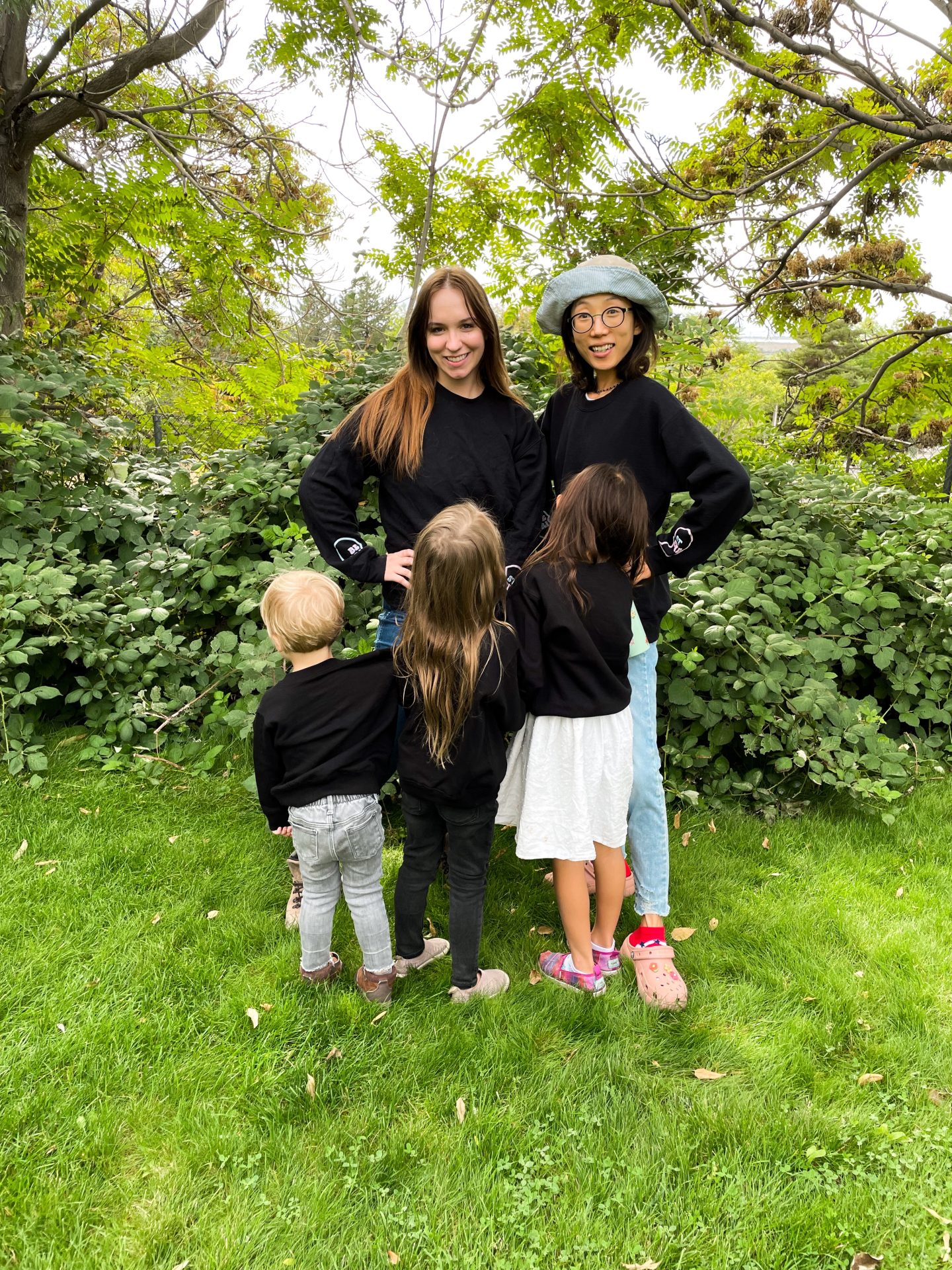
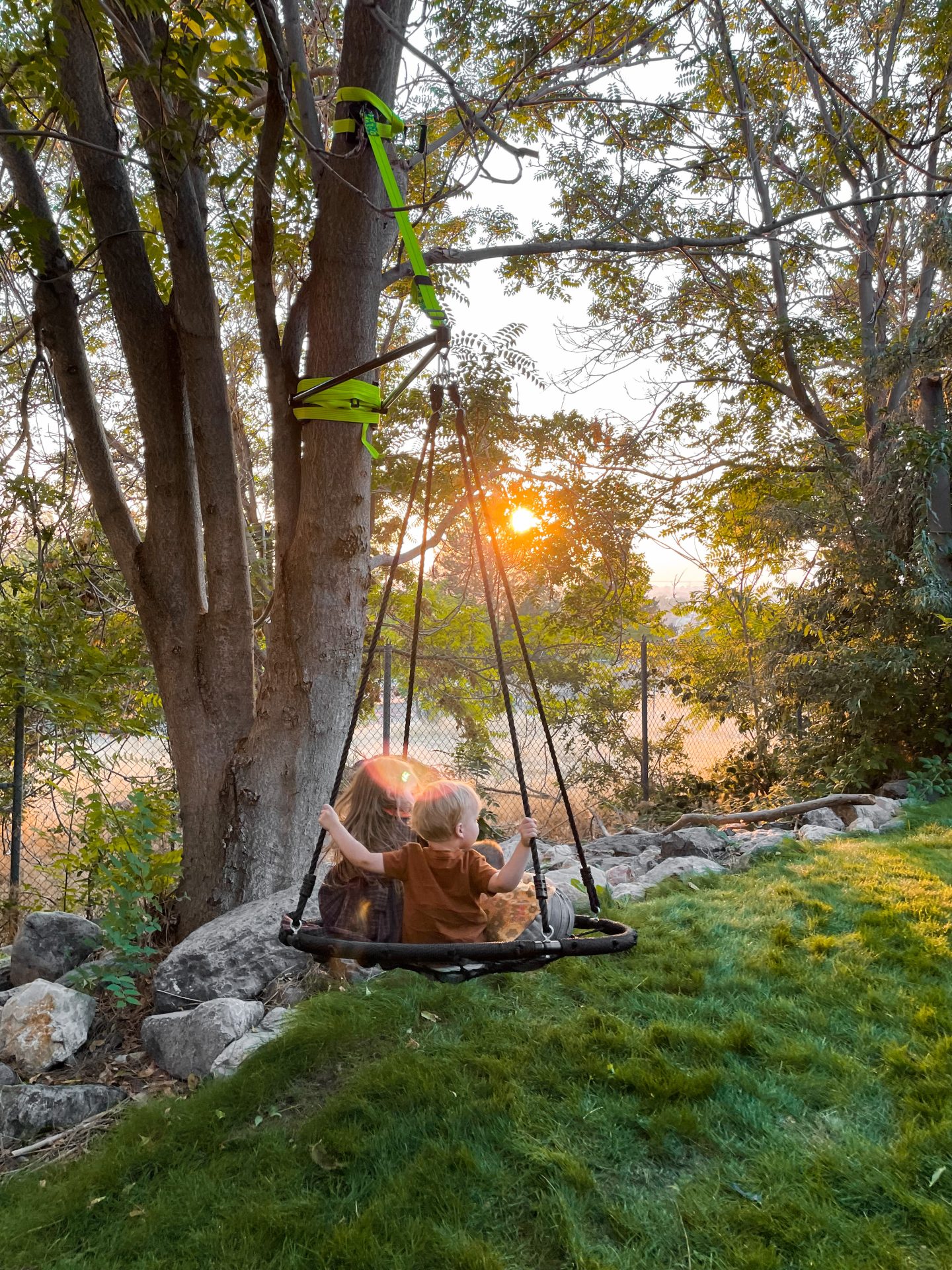


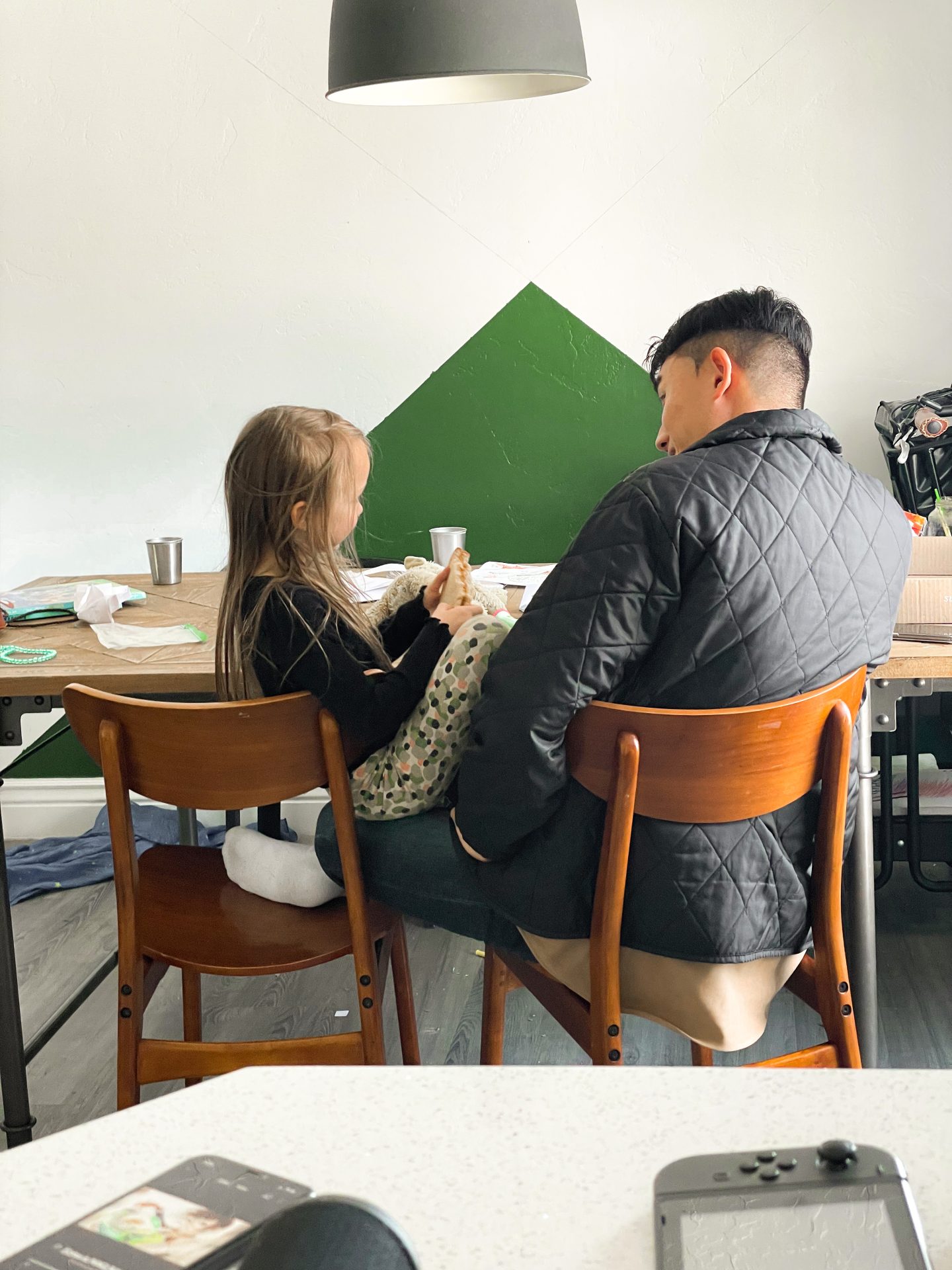
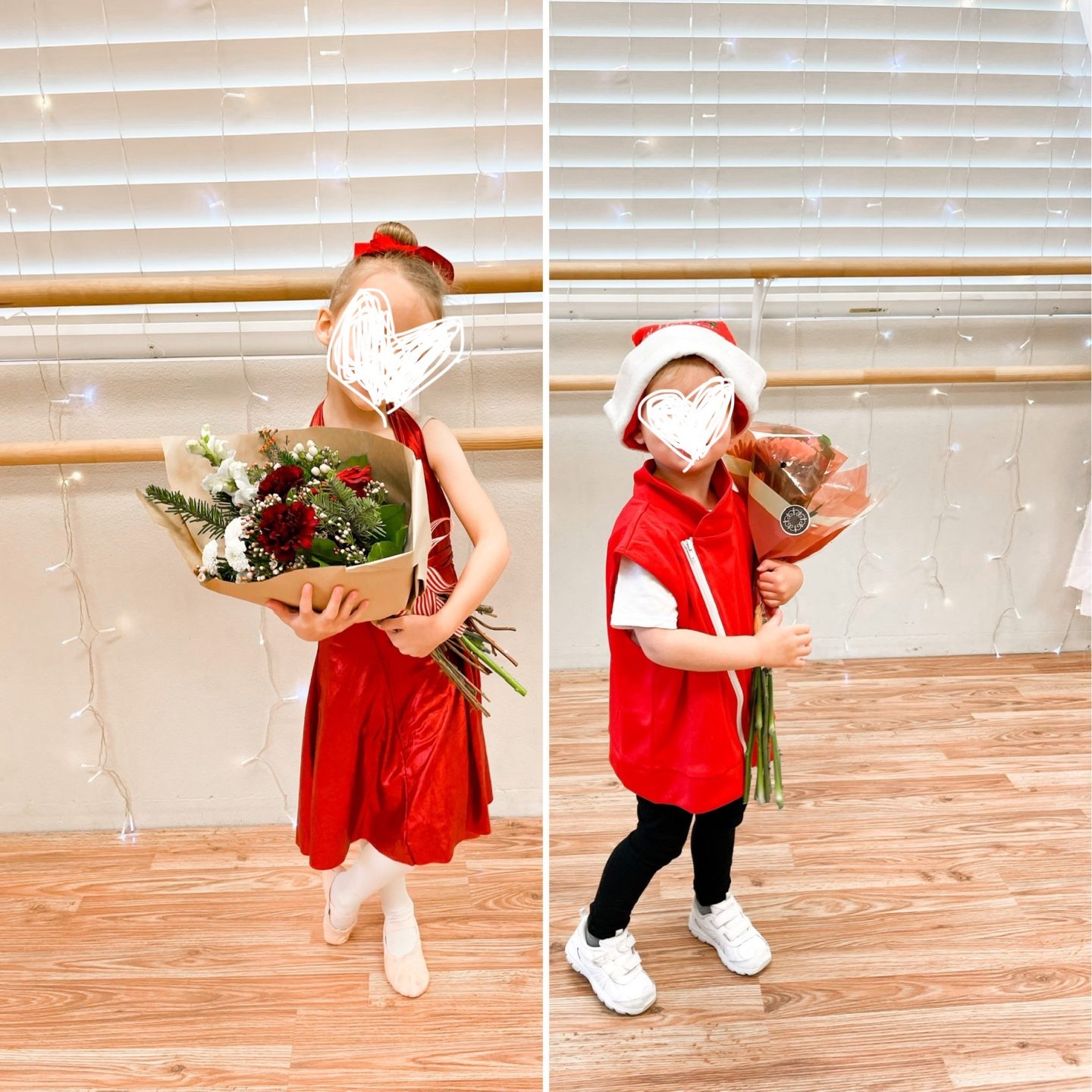
So, when I watch Totoro, I can’t help but wonder if everyone’s lack of community (or lack of people who even seem interested in being a part of one) is a result of the current times, or if it’s actually an insidious result of our dismally planned communities in car-dependent rural areas, and suburban sprawl alike. See, in the Kusakabe’s village, though there is a whole lotta nothin’, everyone can easily walk to each other—safely!—and to school. If you need more than what the tiny village can offer, there’s a bus that runs every few minutes, and a trolly. Which then, of course, gives village residents the option of living in a nice rural setting, because they can easily get wherever else they might want or need to go.


Cars are the ultimate isolator. Though convenient for road trips, or moving lots of stuff, they endanger those in the car, as well as those outside of it, and keep us separated in our little pods, as stressed-out (studies show driving streets humans out a lot). What kind of existence, really, is sitting in your climate-controlled house—maybe not with sidewalks; or with sidewalks, but with nowhere to actually go to, and nothing ot really see—getting into your climate-controlled car, and then spending a little time moving around at your climate-controlled location (but you might be sitting there, too!). As humans, we needs to see, and smell, and touch, and hear, and not be put under constant you-could-die stress when you’re driving, or while you’re trying to be more present and walking around.
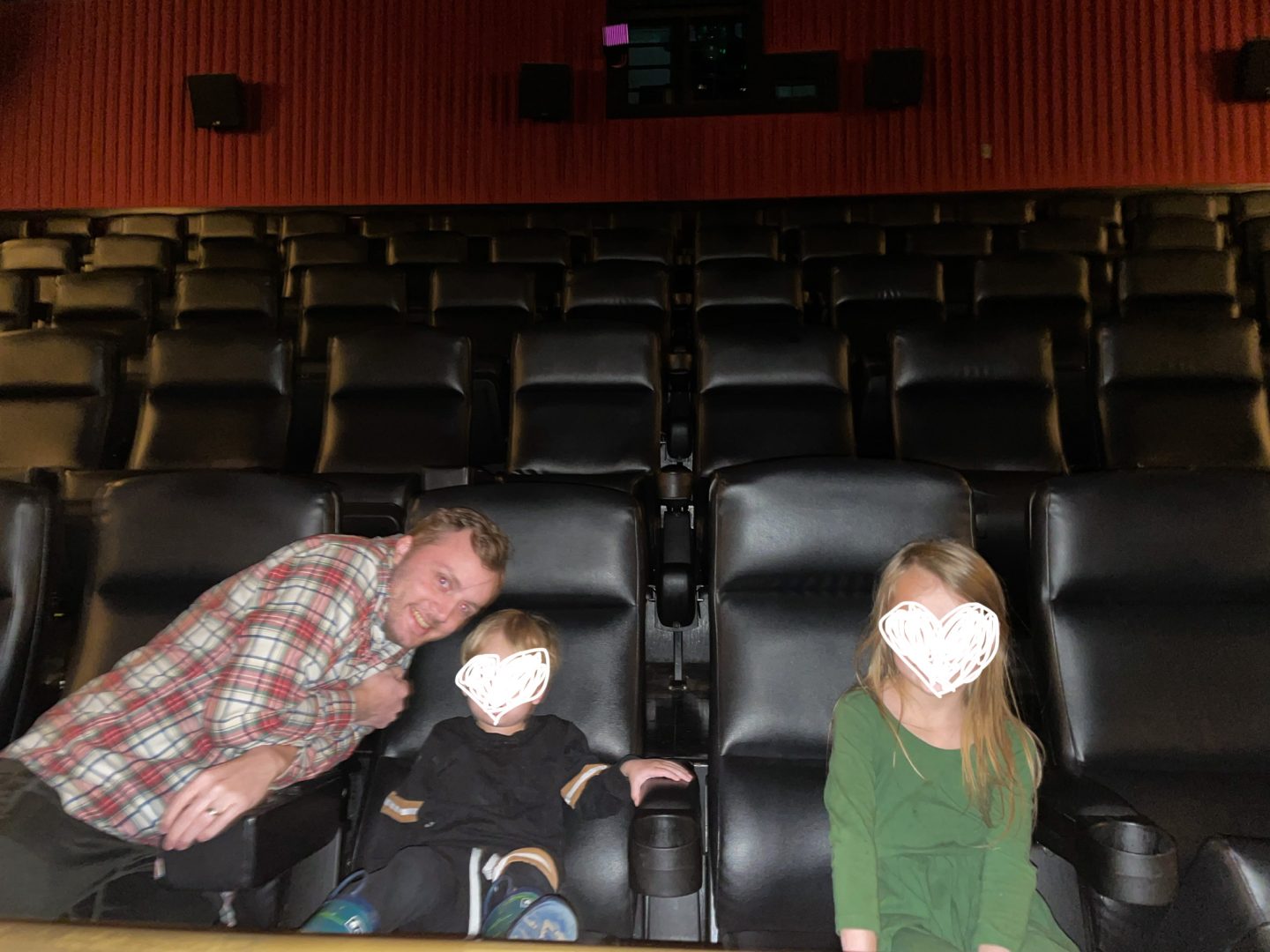
We recently took our kids to the movie theater for the first time ever to see My Neighbor Totoro for the 35th anniversary of its release. And the thing that stood out to me the most from seeing it on the big screen was the sound design. At home, the audio must be super compressed, or maybe out tv’s speakers just can’t do it justice, but the sound design is fantastic. You can hear the tiniest details: padding on carpet; breeze in the grass, a tiny knock or thud. It’s immersive, but most stunningly: it feels real.
I knew that spending time outside was important, but reading The Last Child in the Woods, which is extremely packed with science-backed information, finally got me to take myself outside. I’ve considered myself ‘indoorsy’ for about half my life. Though nature is nice, everything I liked best was inside. However, once Gwendolyn was 2, I knew I needed to make a greater effort to take her outside in wild spaces, and to foster a love of nature in her. And the craziest part was: it did the same for me. After months of going out for hours a day 3+ times a week, I felt weird and bad, and I craved getting outdoors again. It’s amazing for both physical and mental health in humans of literally all ages.
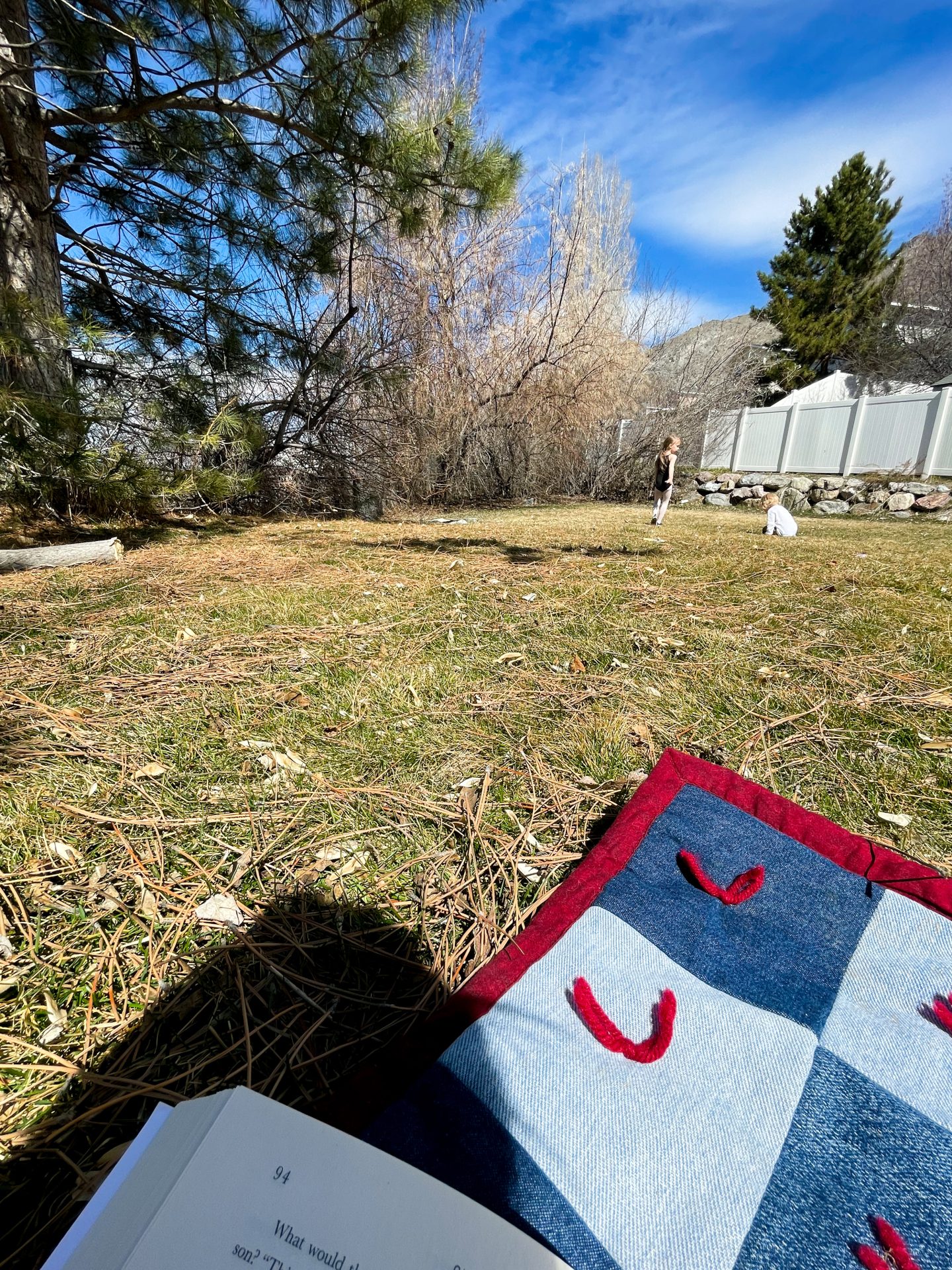
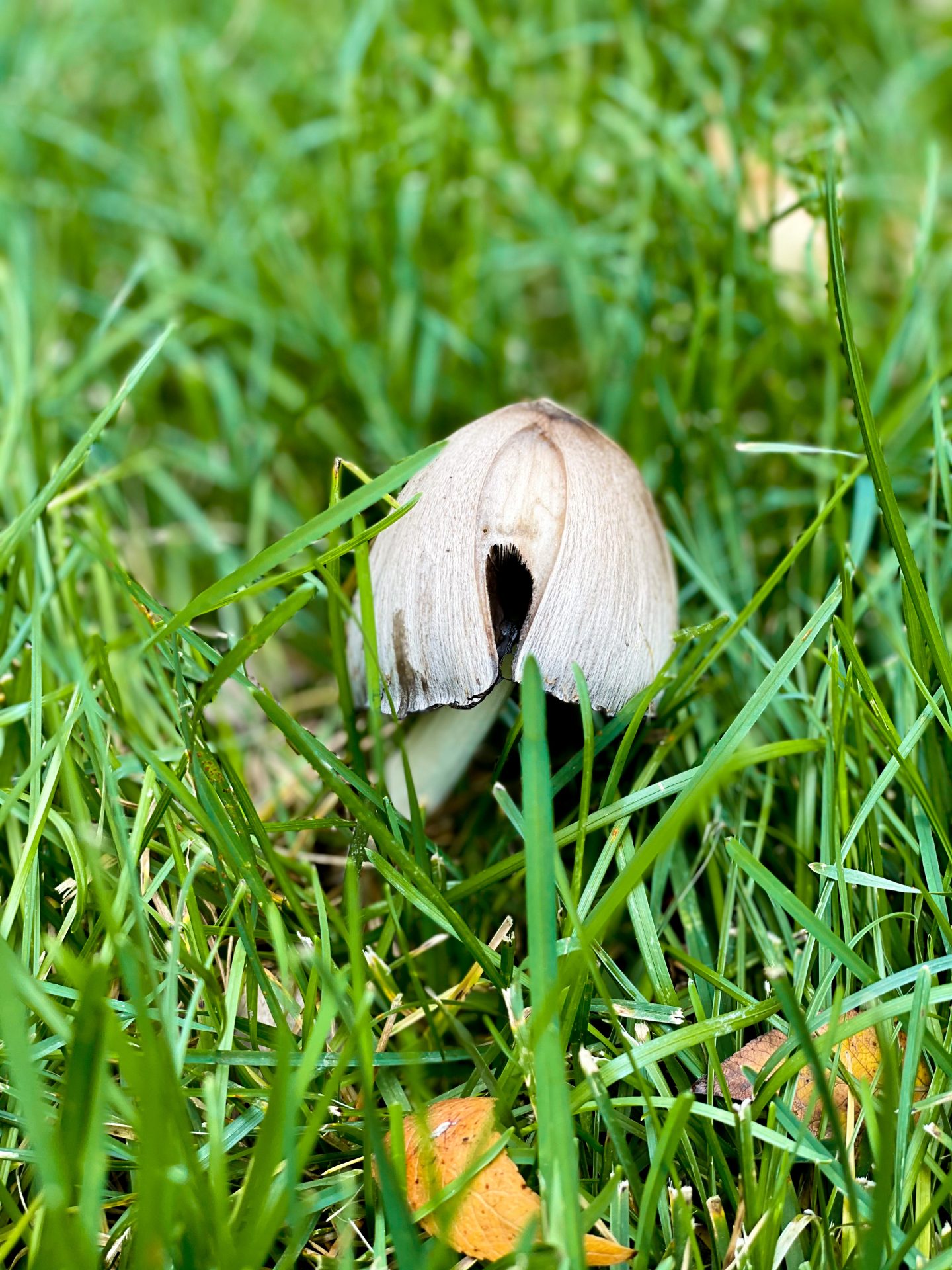

We actually moved to Provo, despite me not having the vocabulary at the time, because I wanted to raise a family in a town where I could park the car, and not get back in it. Visit the library, the park, and a restaurant. I wanted to be, and to just to drive from A to B. I wanted to be in a place where we could at least try to not drive everywhere, and where our kids might be safe going places on their own sooner than they would elsewhere.

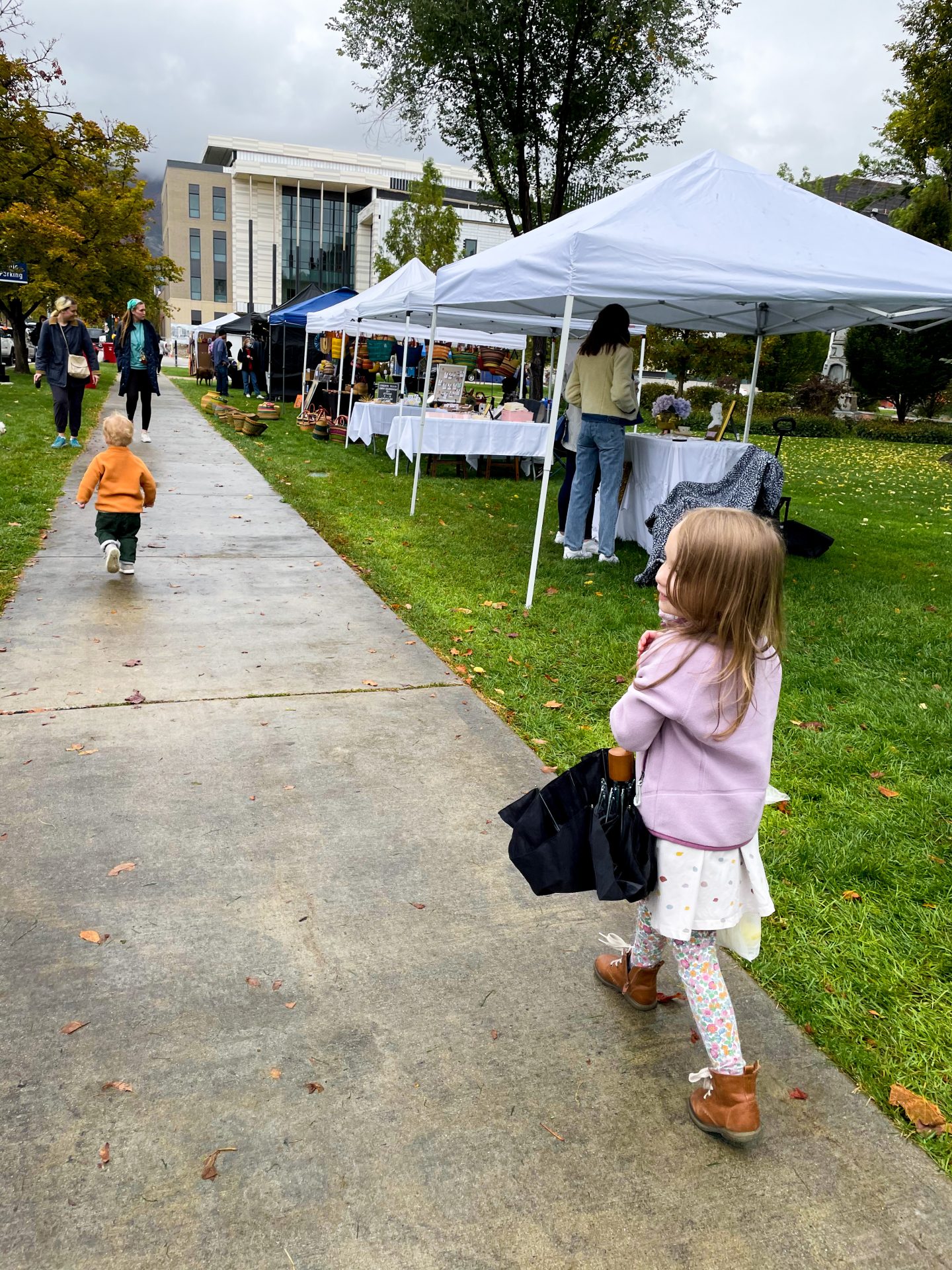
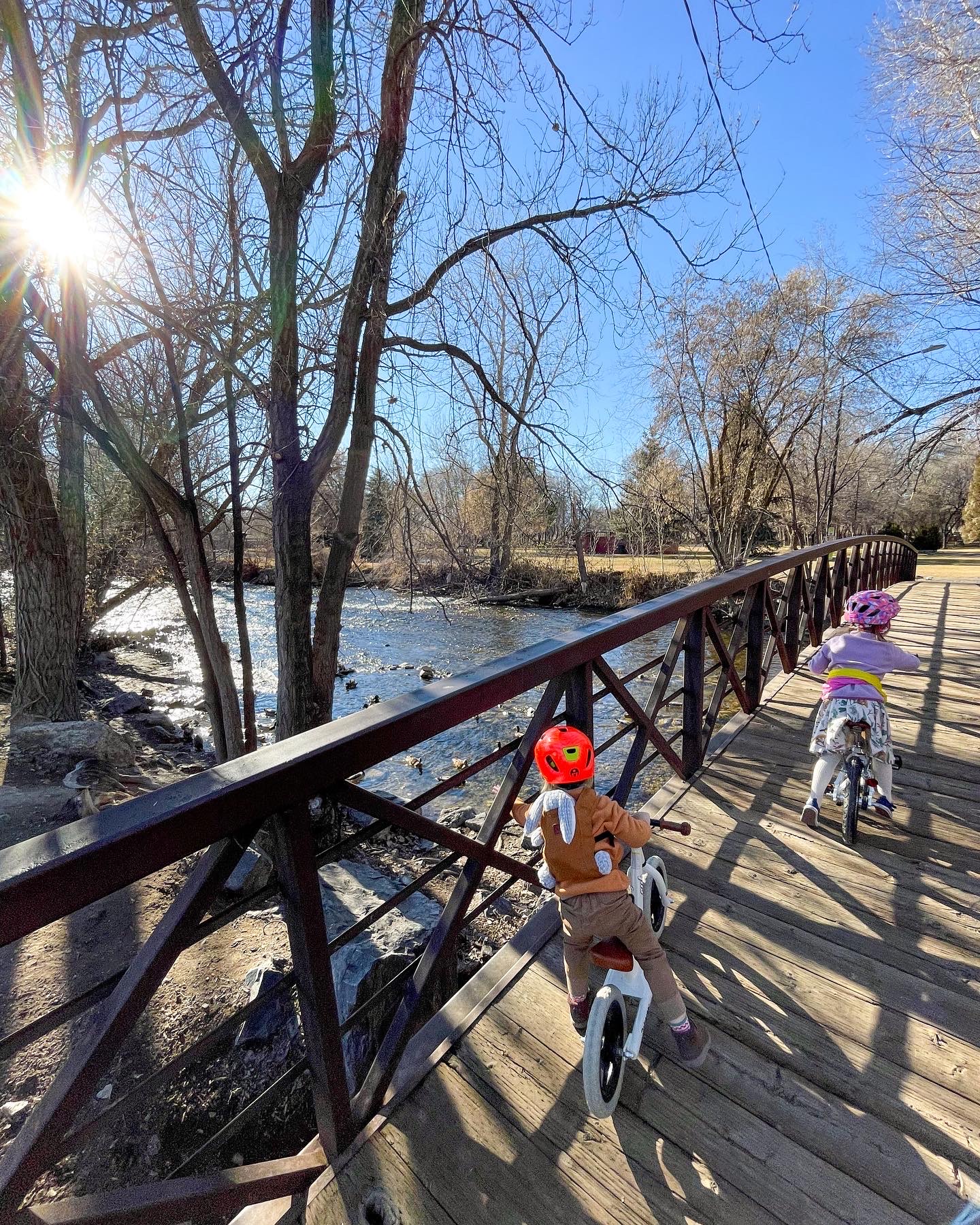
But the reverence for nature, informal and omnipresence of religion, inclusiveness and helpfulness of the community, and the walkability aren’t the only healthy aspects I appreciate about Totoro. The movie also manages to cover serval difficult subjects in a way that is palatable to even very young children.
Moving to a new place, and into a strange old house is a big deal. Having one of your parents sick in the hospital for a long time is a big deal. Meeting new people; getting teased; having your parent not show up when you expect them to; going to a new school; losing your little sibling for hours are all really big things. But the film shows them all in such a realistic, matter-of-fact, undramatized way, that I think it allows children—or anyone watching—to stay present, and feel that the characters are feeling, without being forcibly swept away into an extremely-heightened emotional state.
So, in the end, I like My Neighbor Totoro because, for me, it is just about life. What can happen, and the whole point of it all. Really living and experiencing the word around you, and being in a place (or creating a place) where people are free to, and easily able to, go places. Doing the best you can for your family. Experiencing spirituality is a way that connects you to yourself, the earth, and others, and in a way that is ‘of-course-ed-ness’, and not ‘or-else-ed-ness’. Creating community that benefits everyone. Connection, connection, connection. Getting better. And then a little better still.
I give My Neighbor Totoro 5 stars.
★ ★ ★ ★ ★
